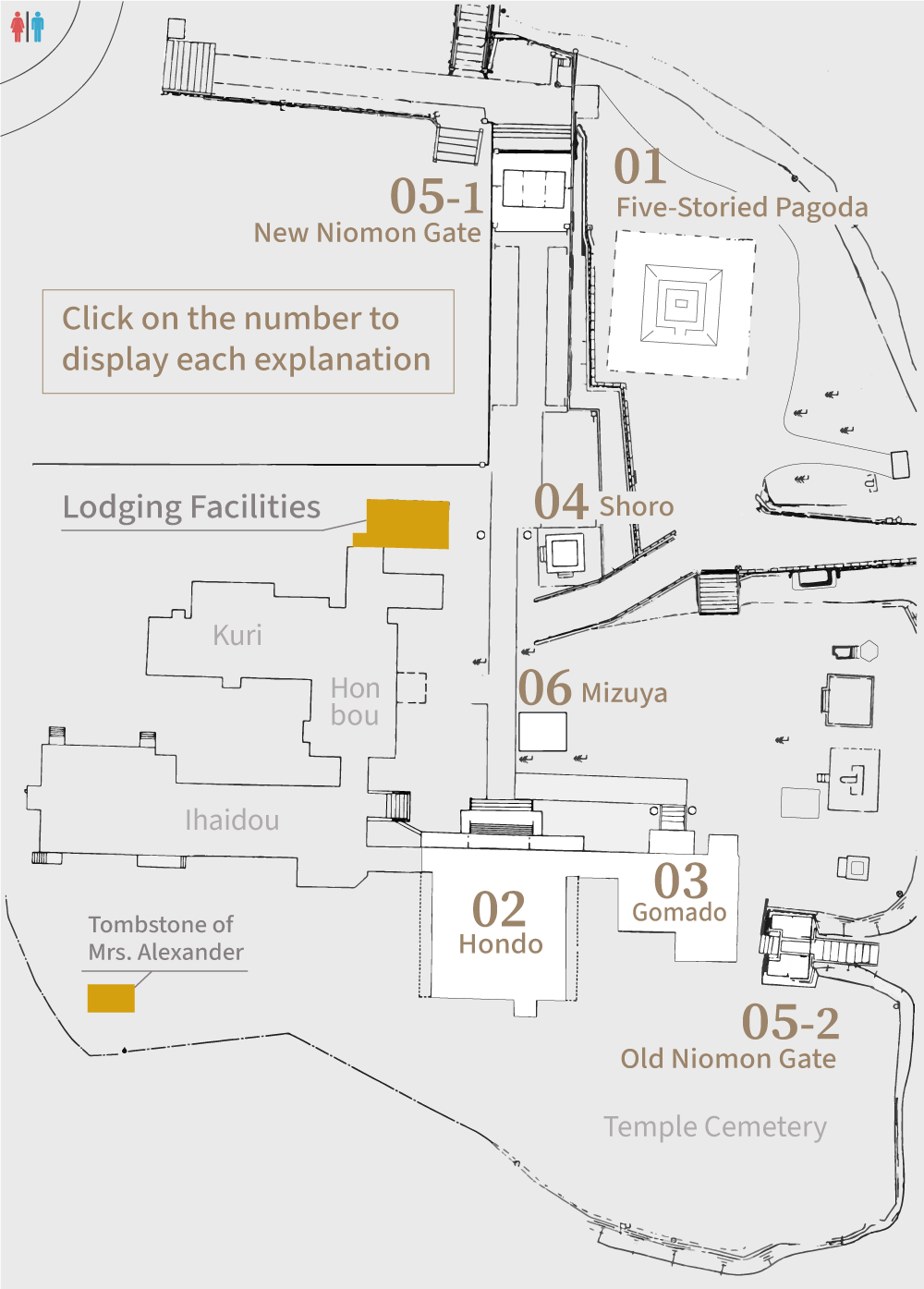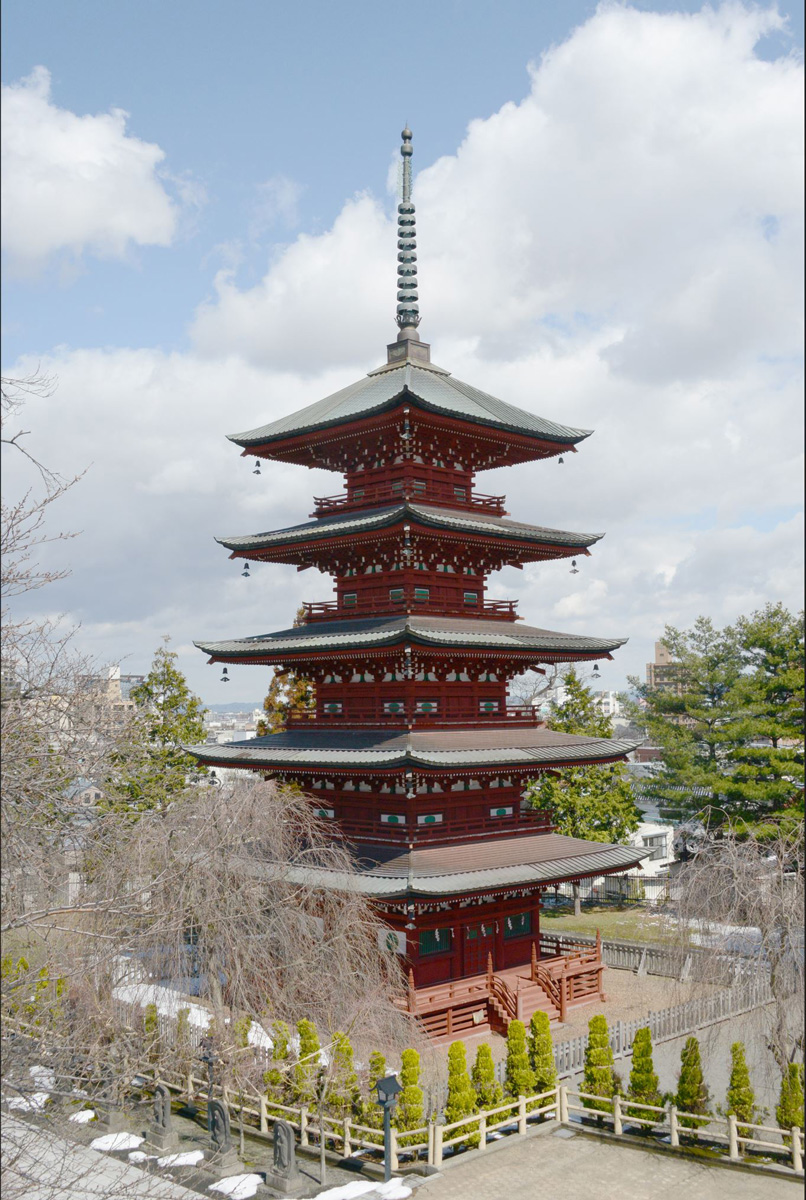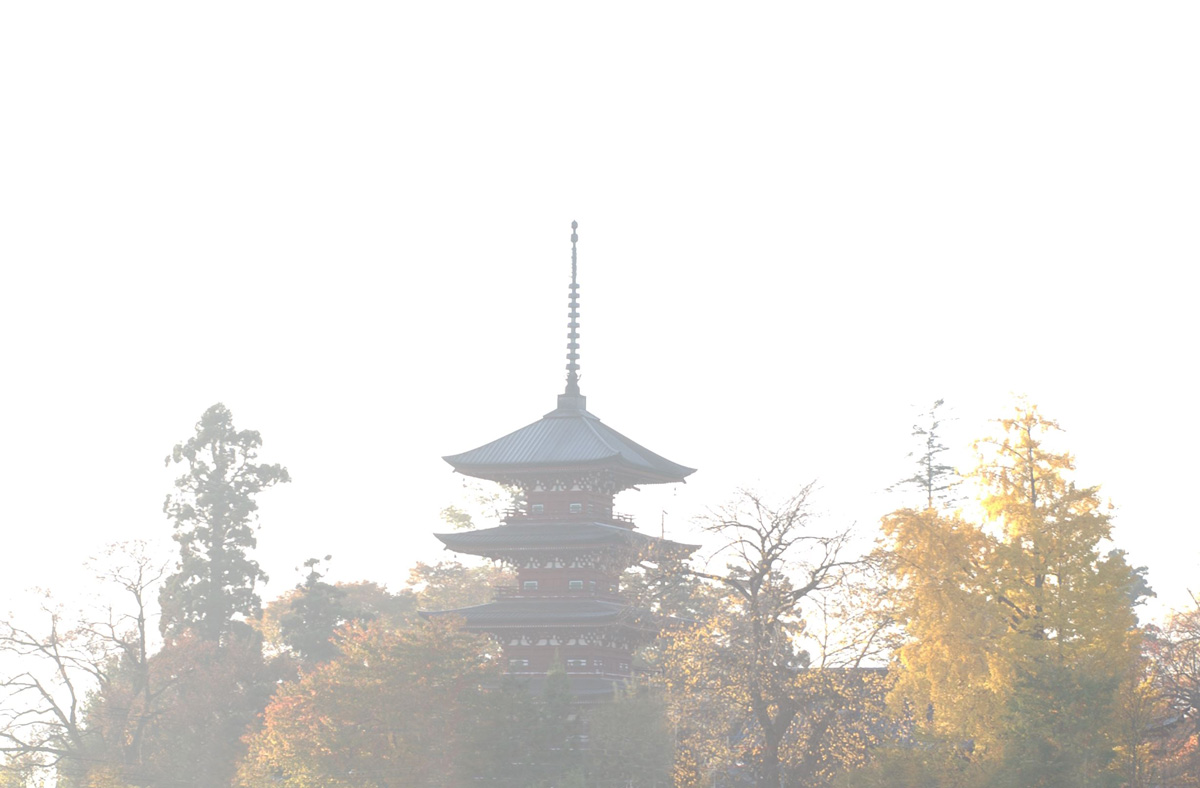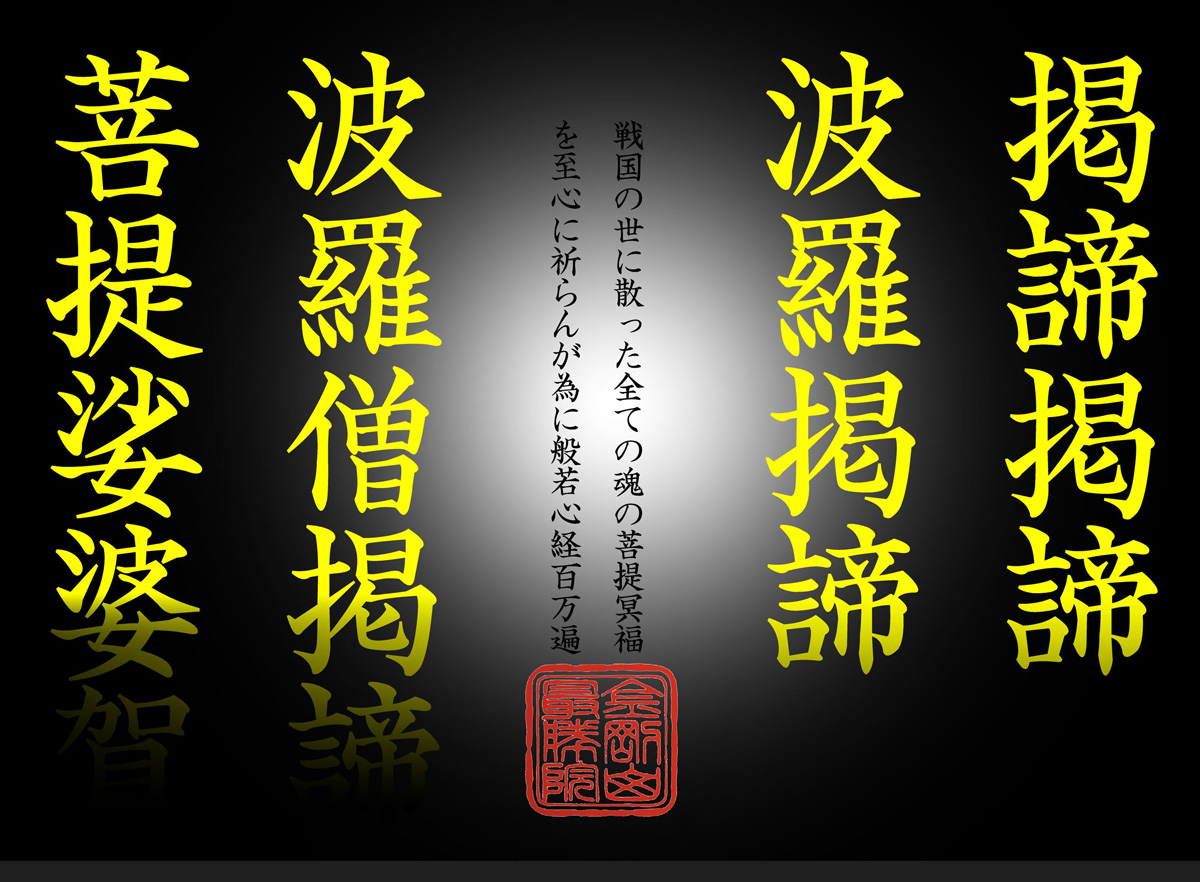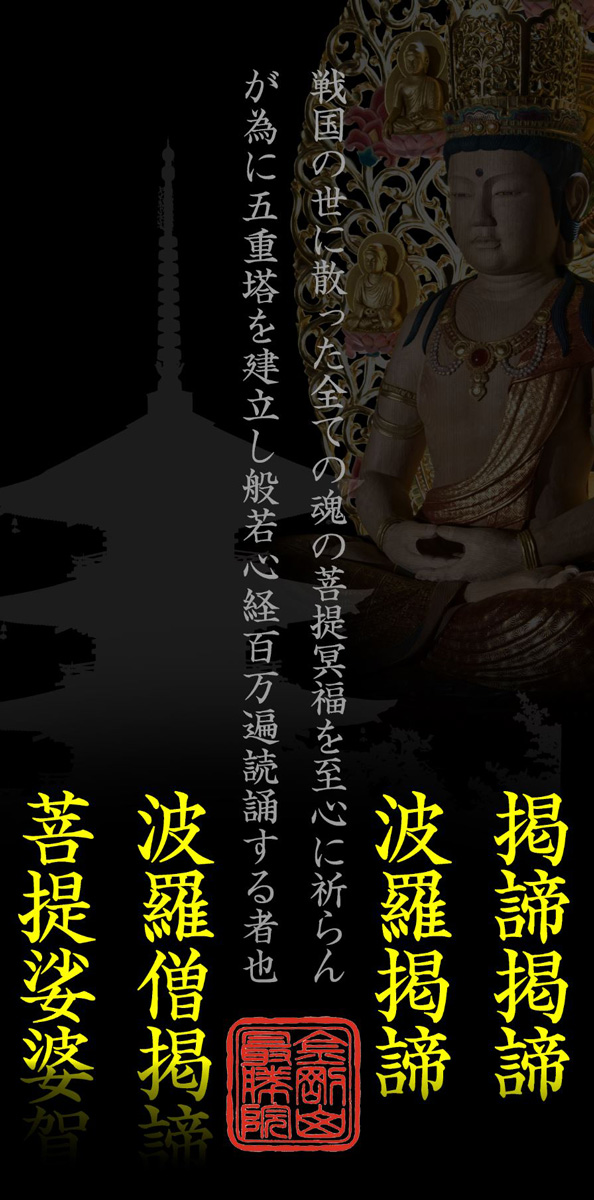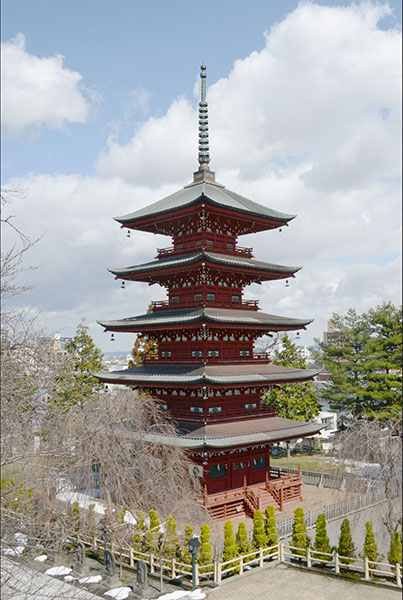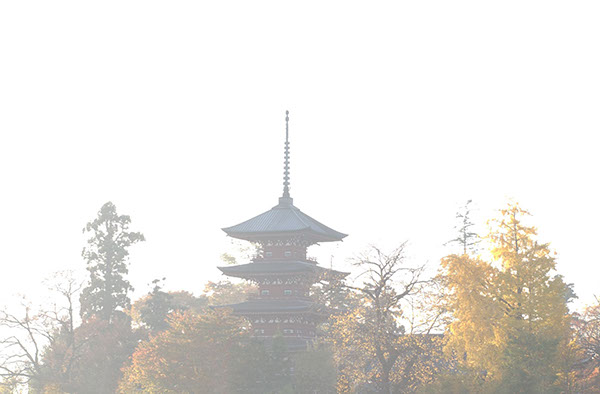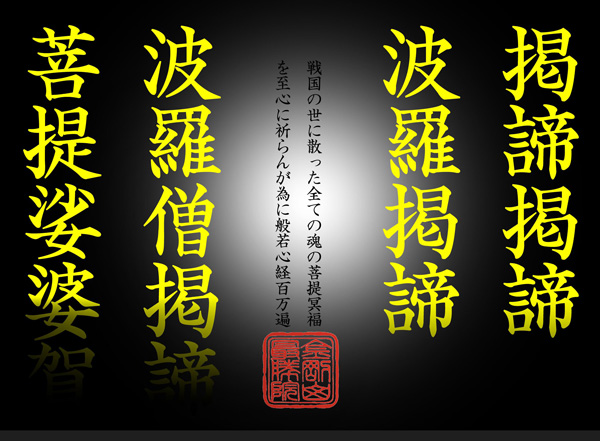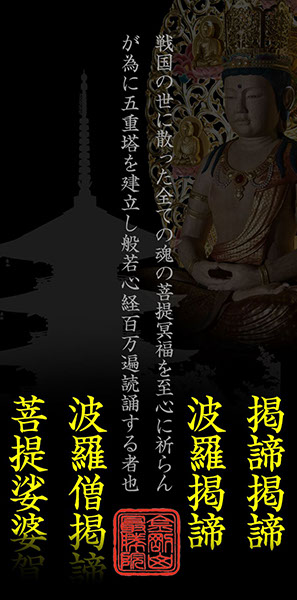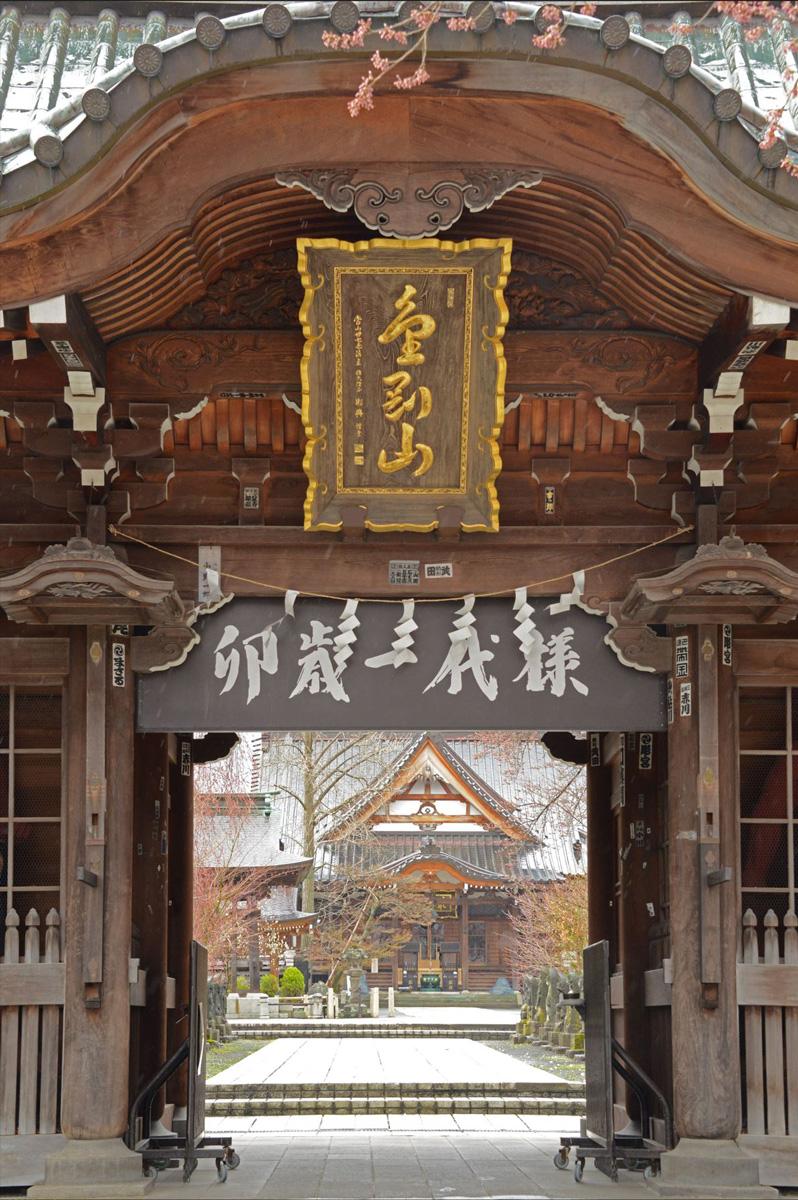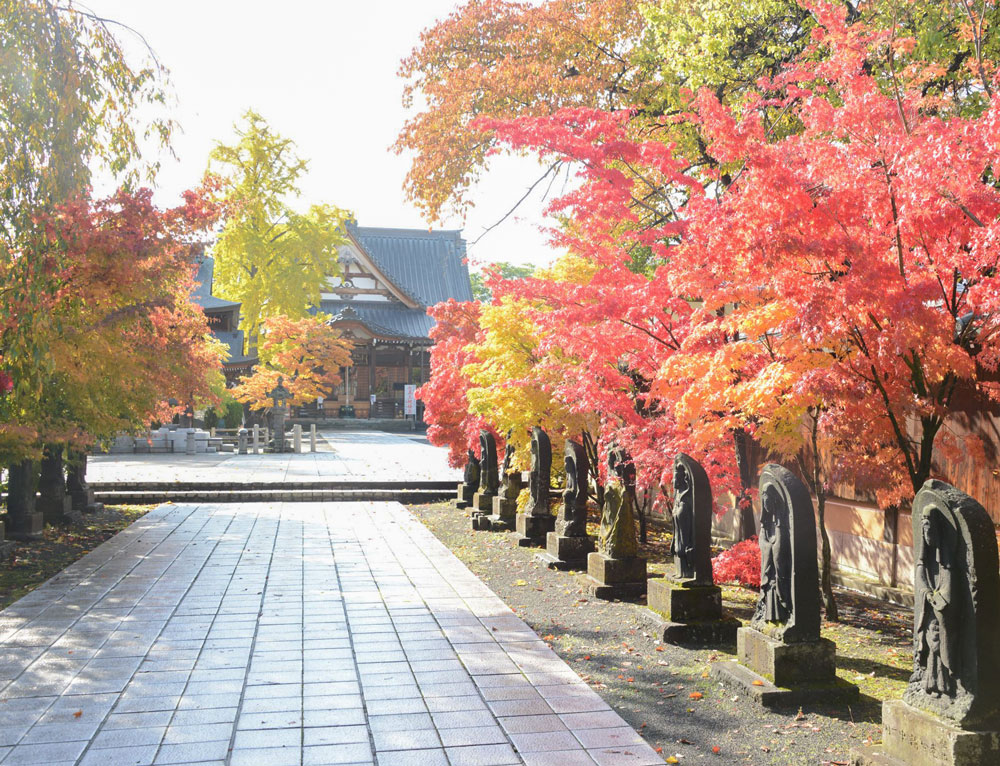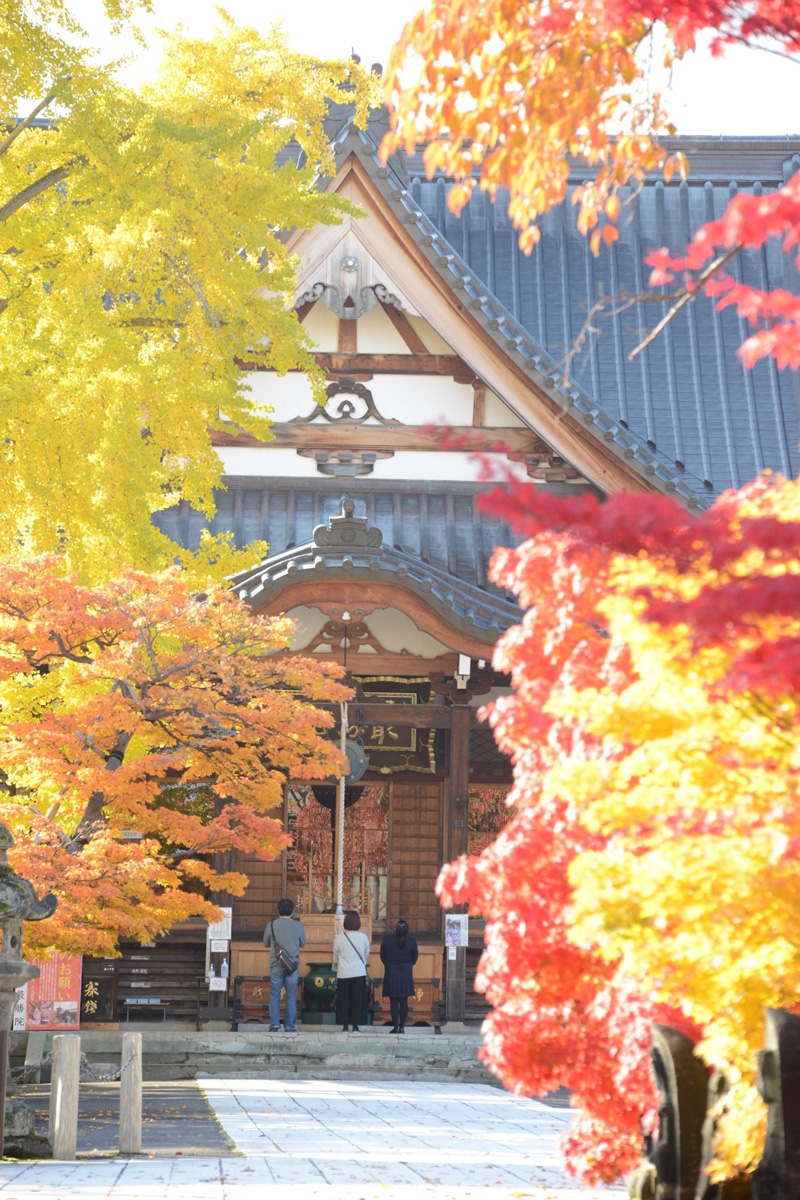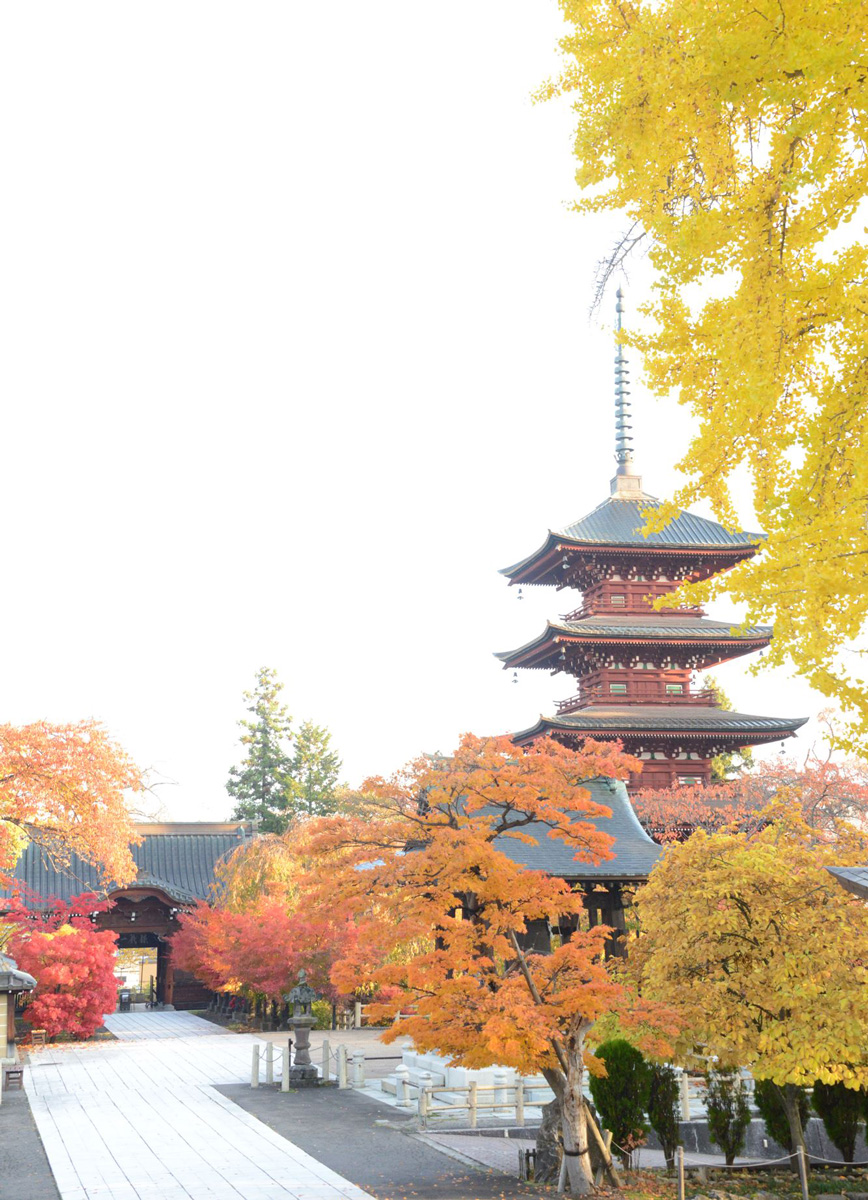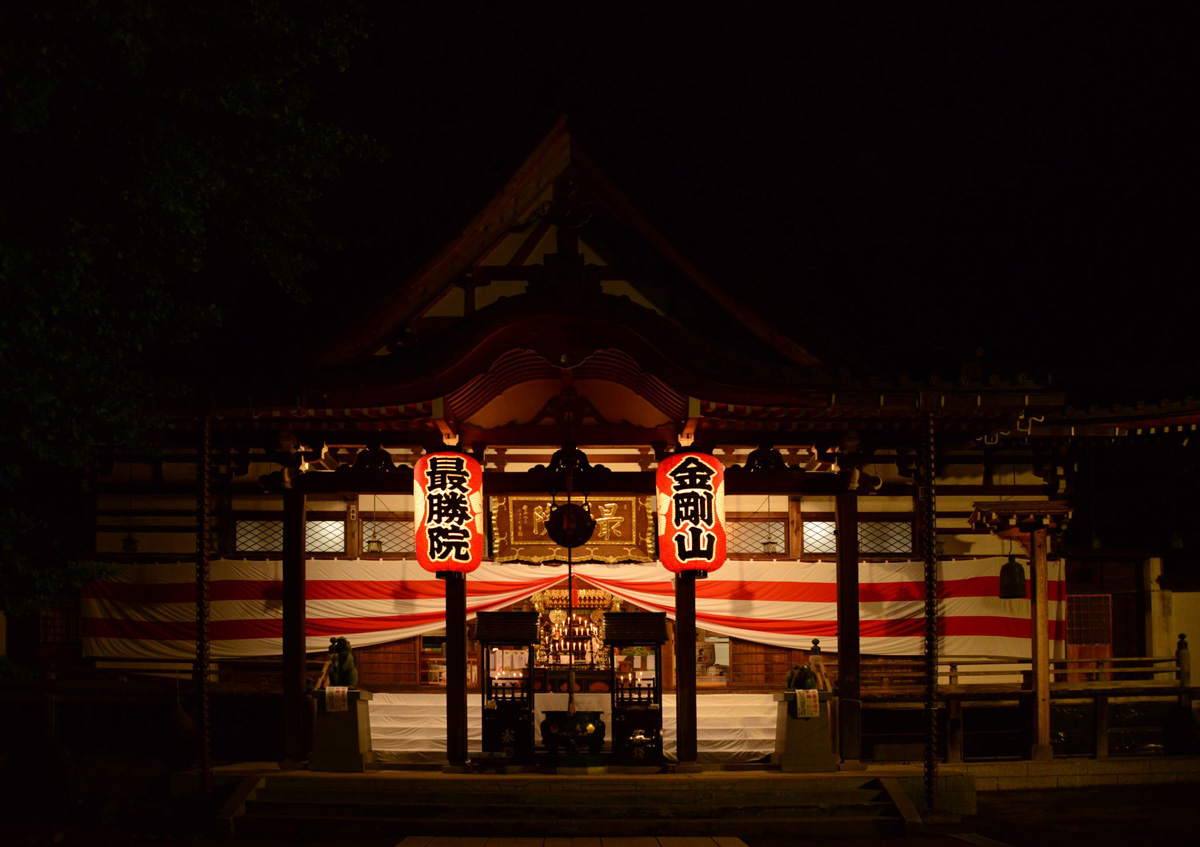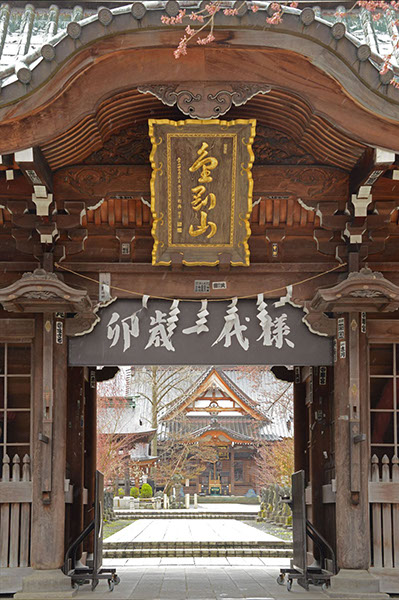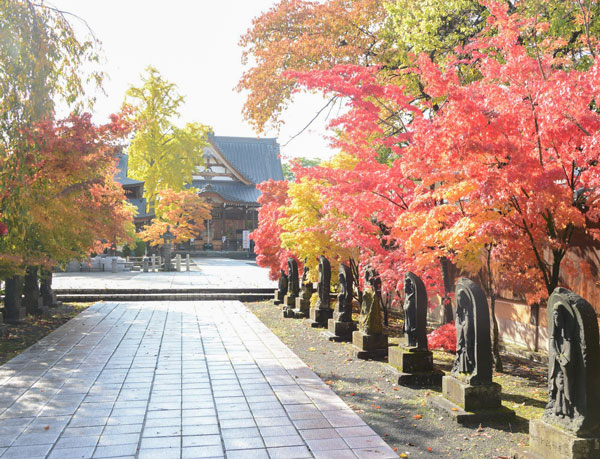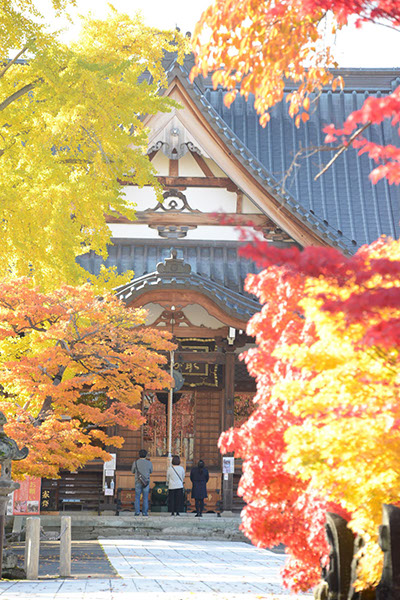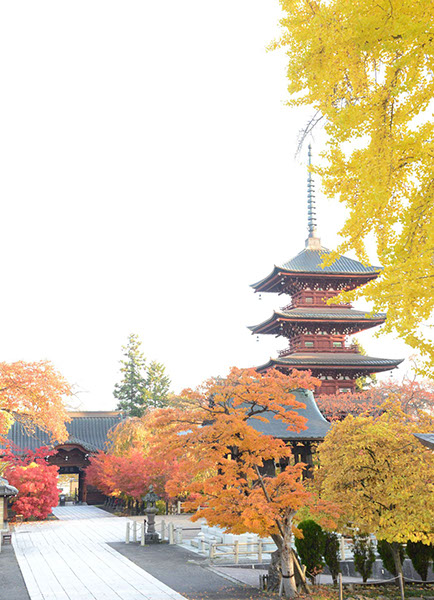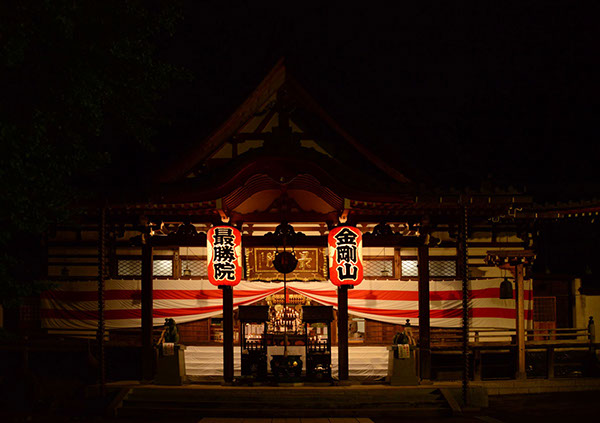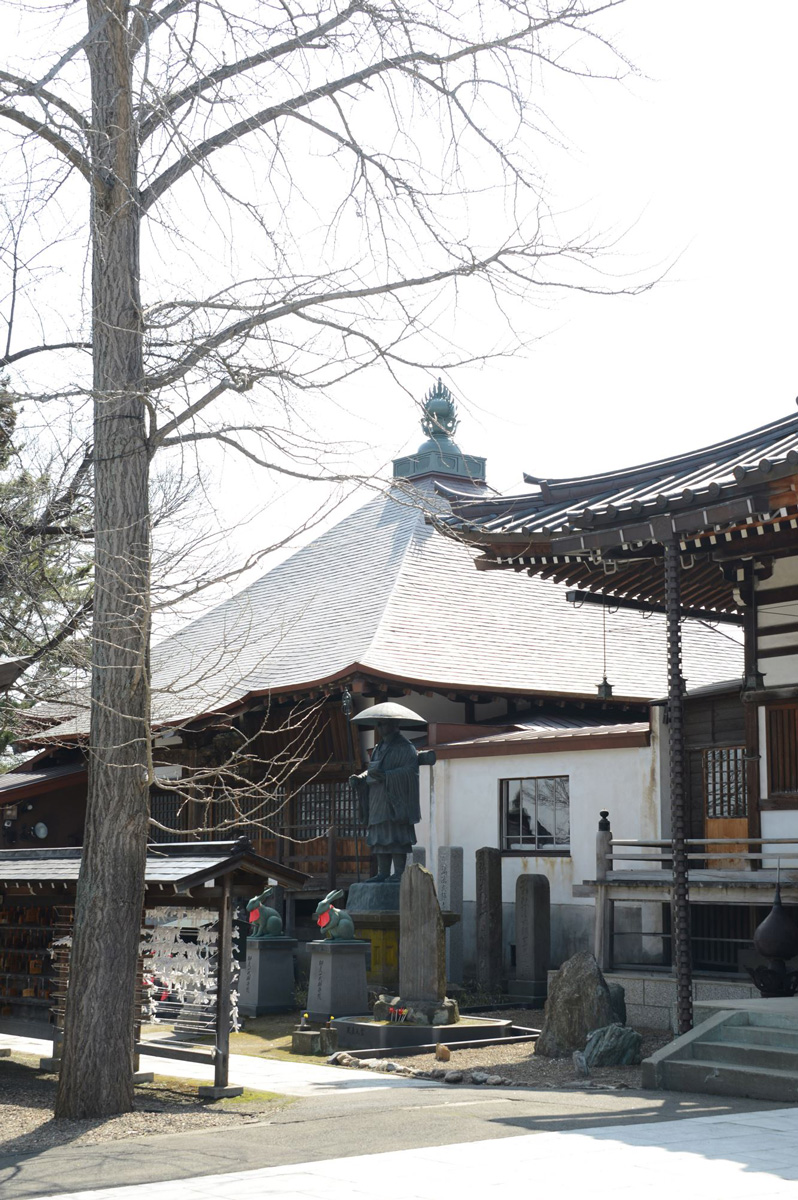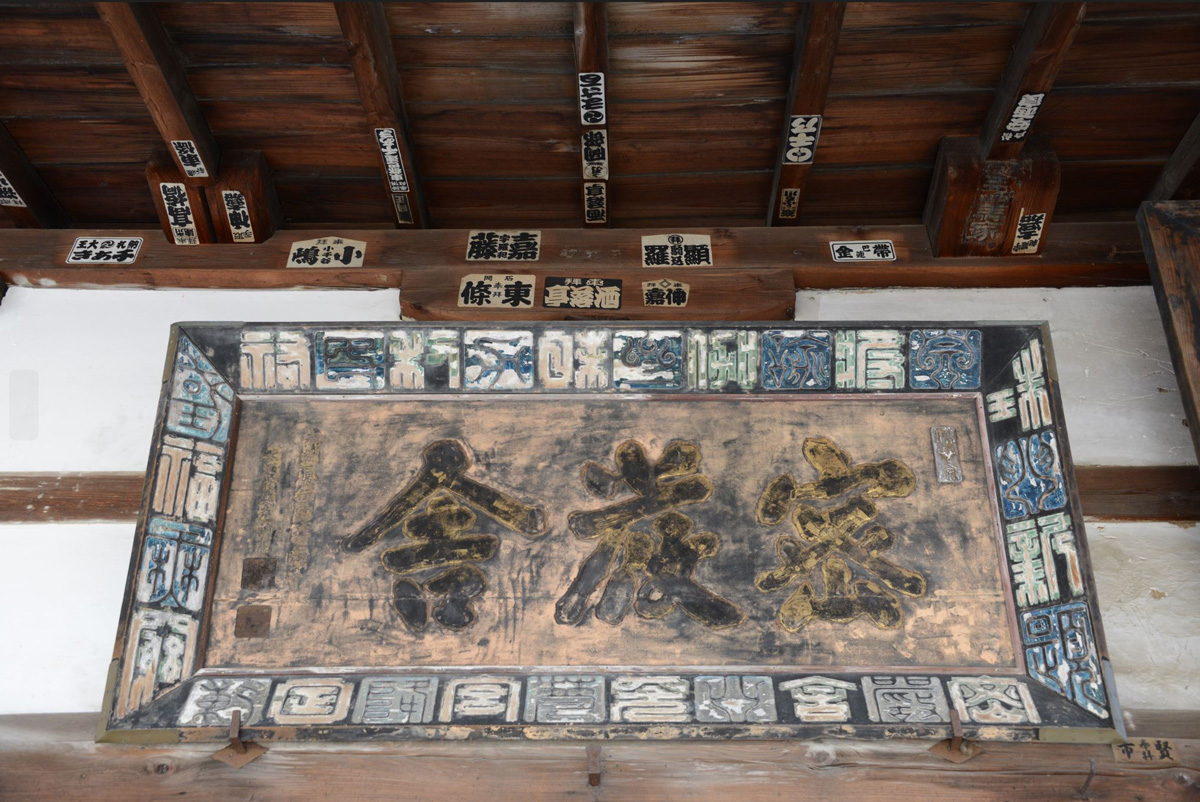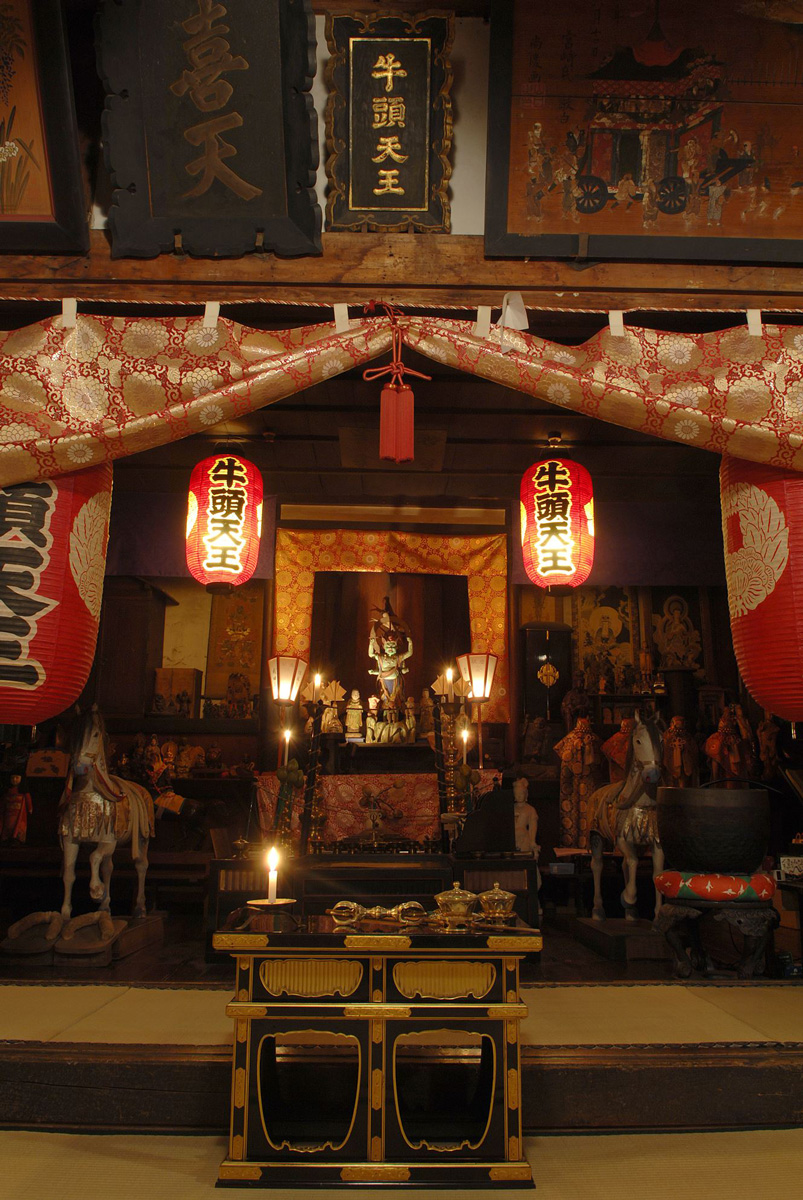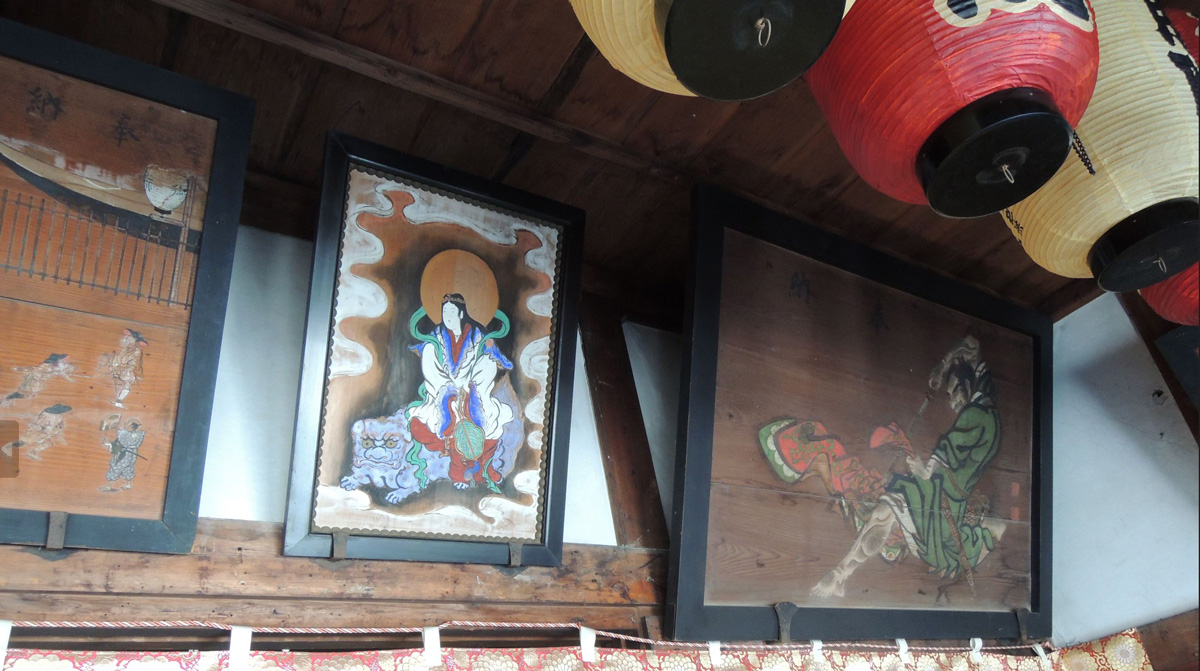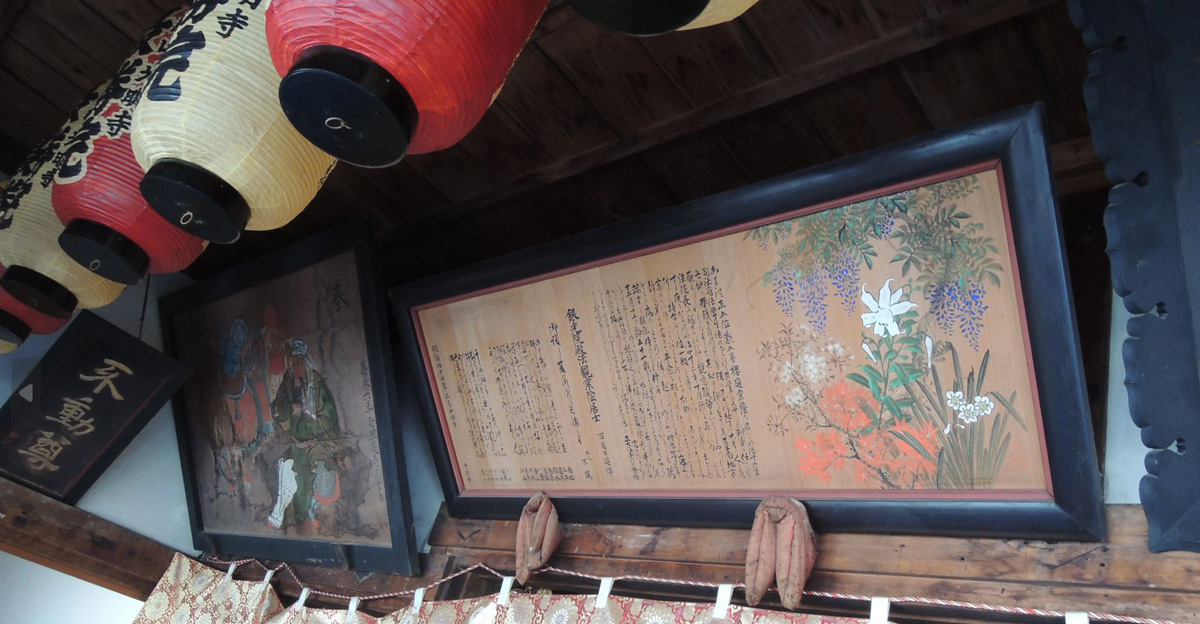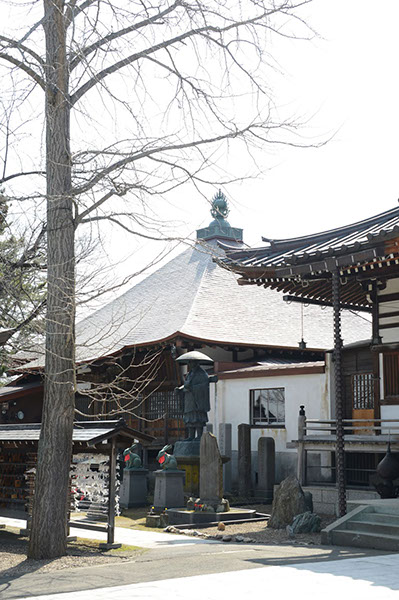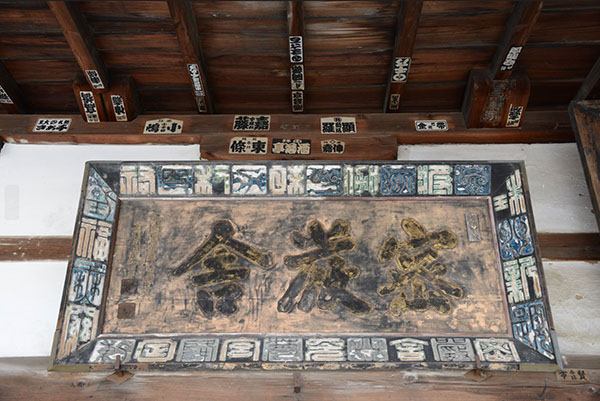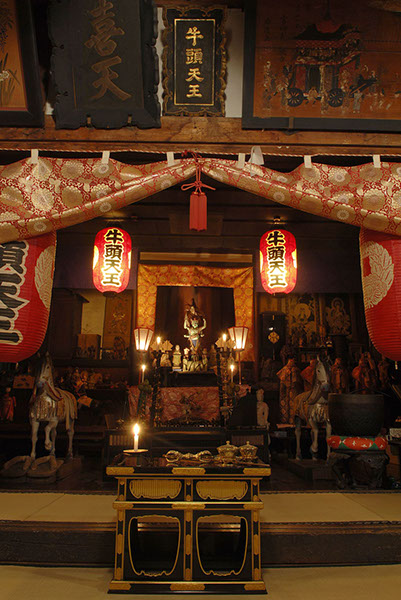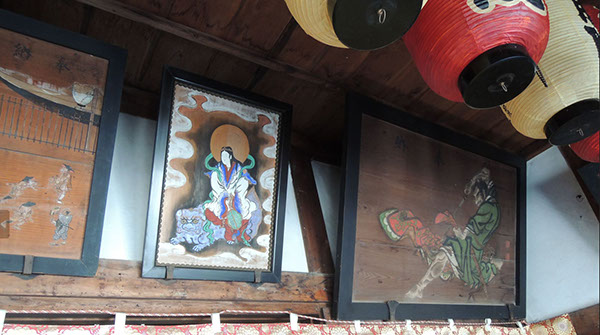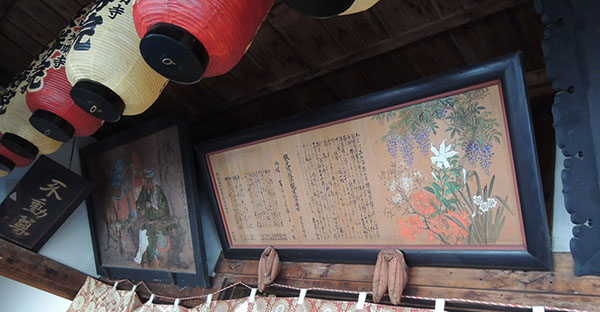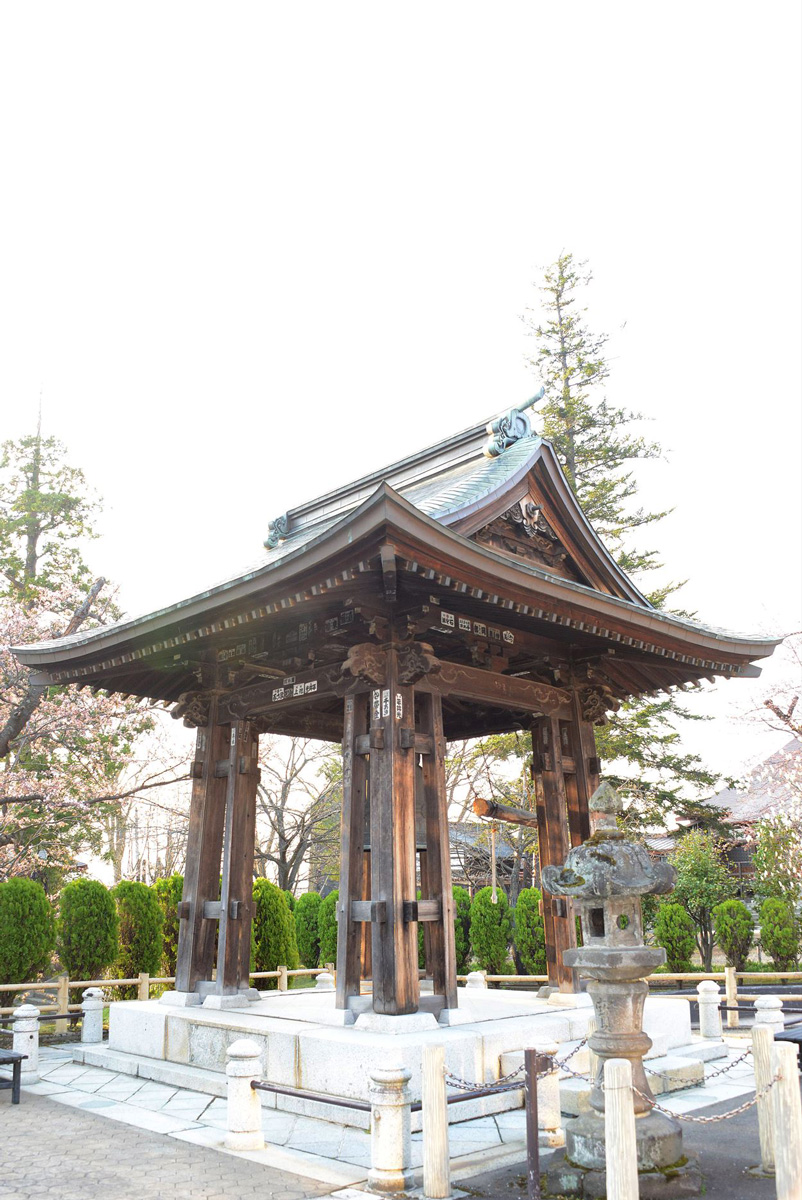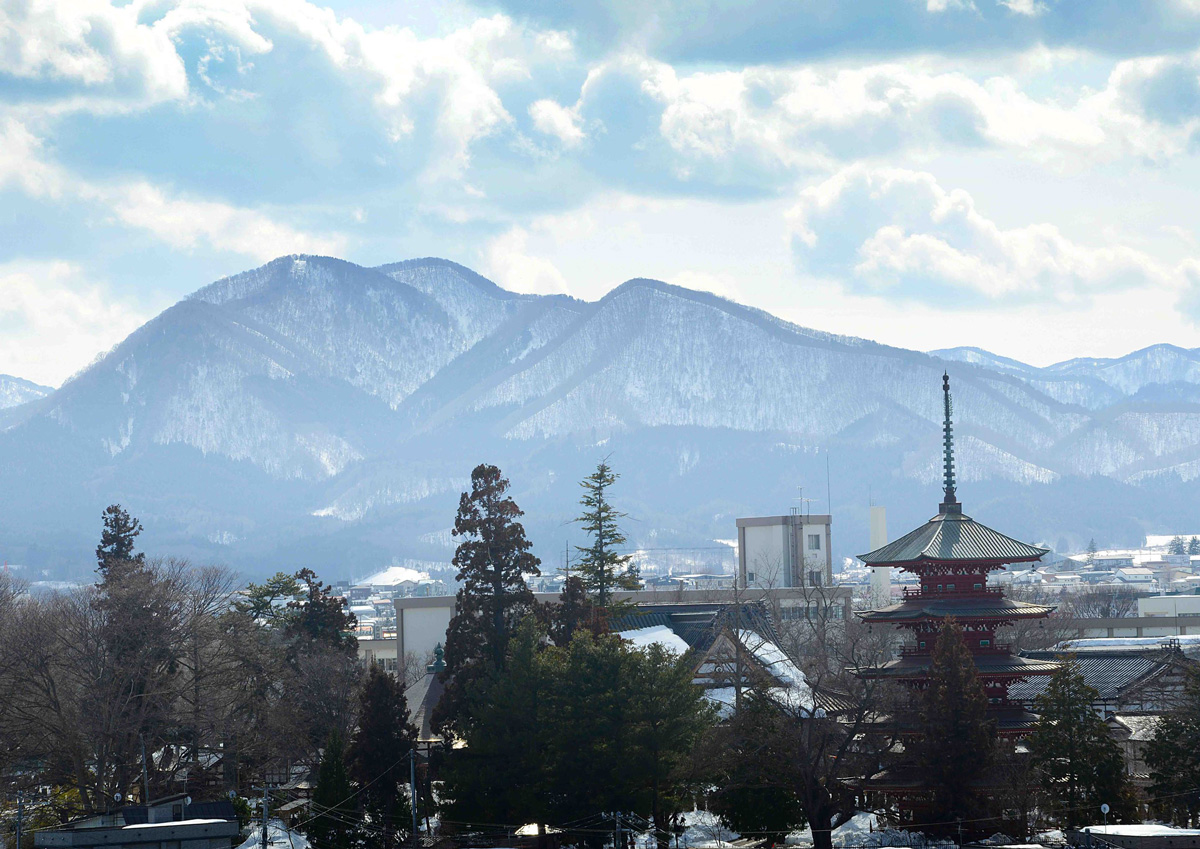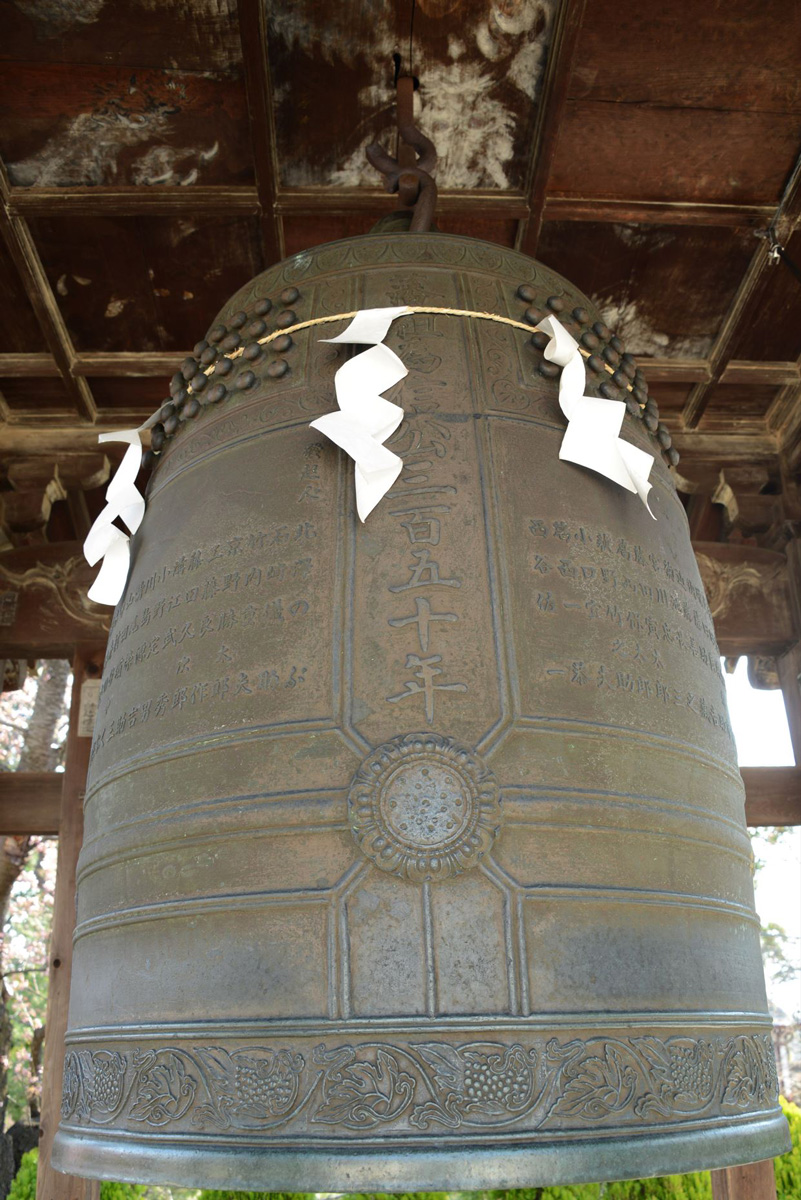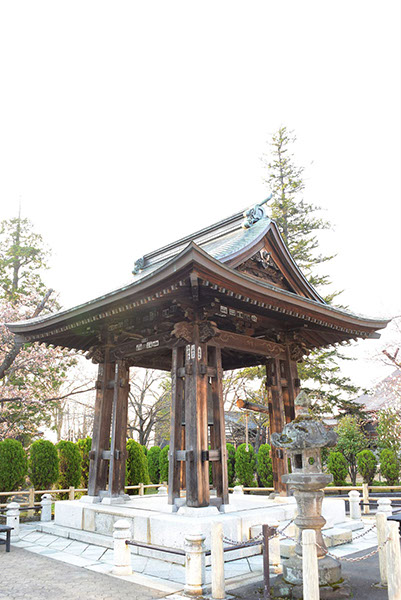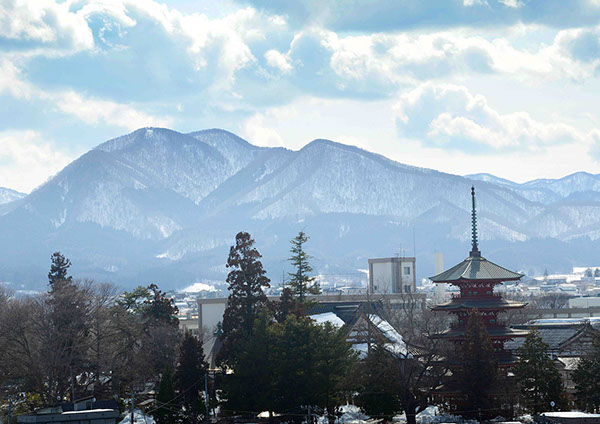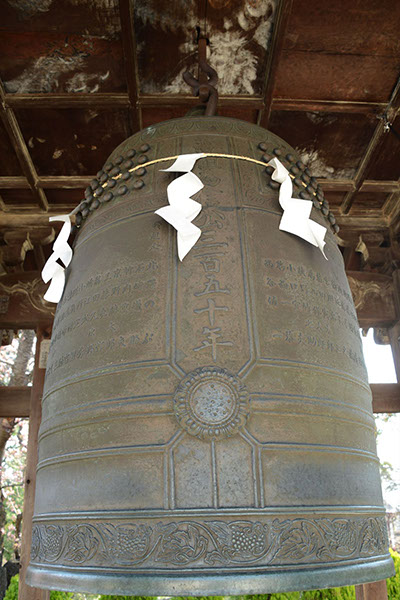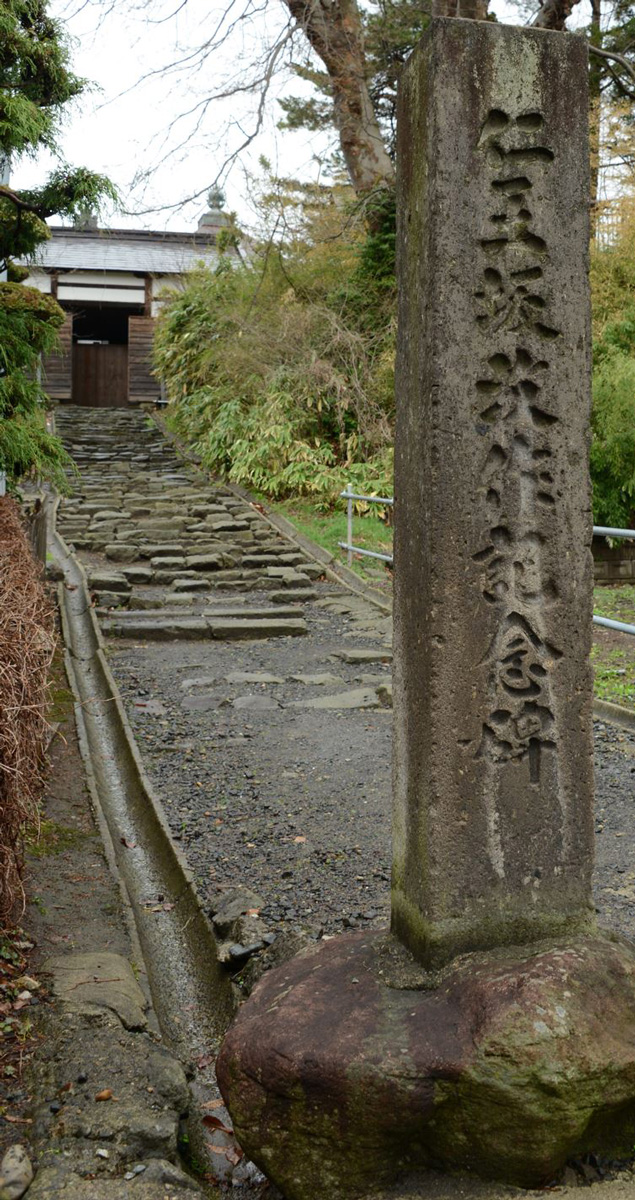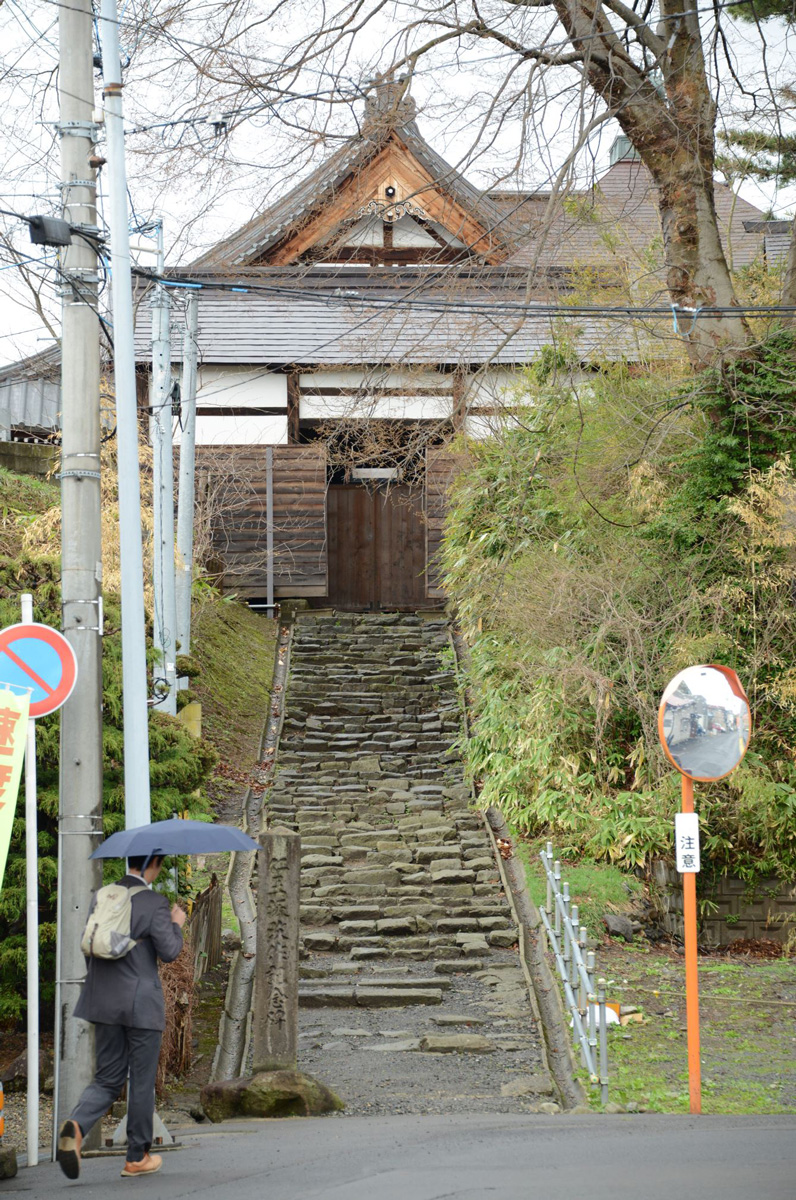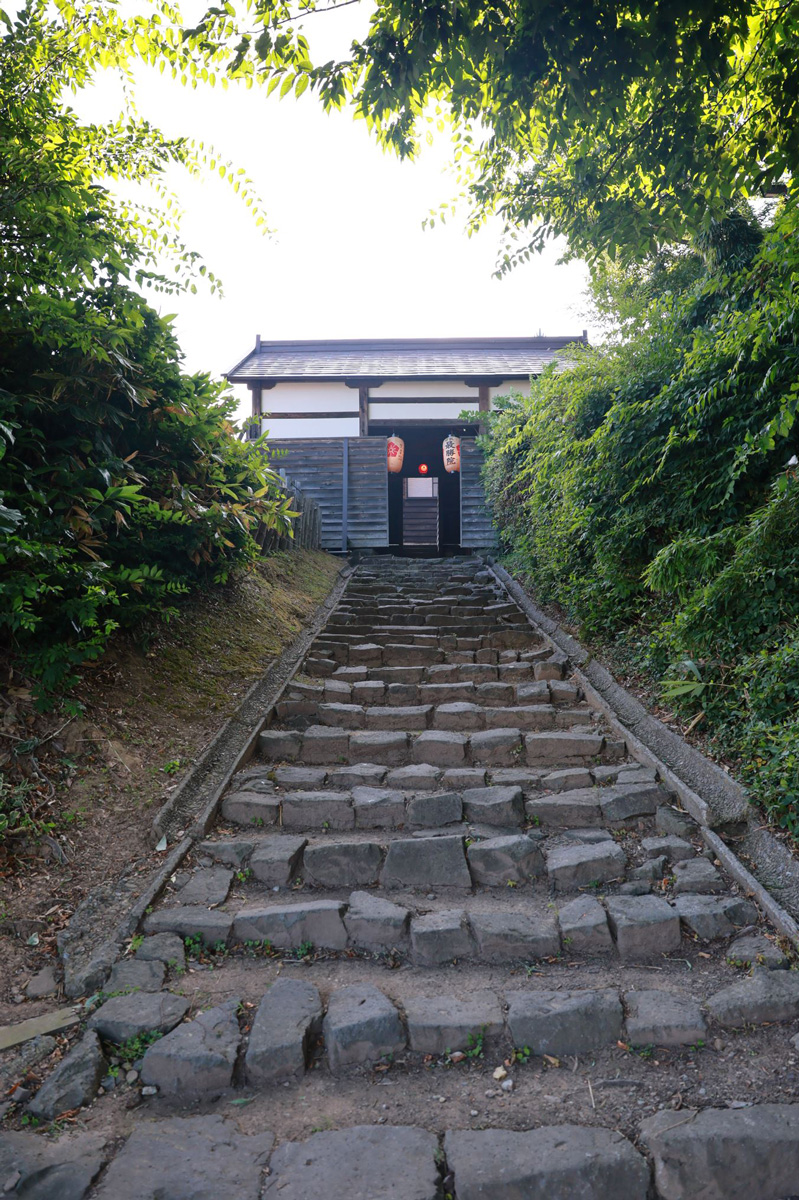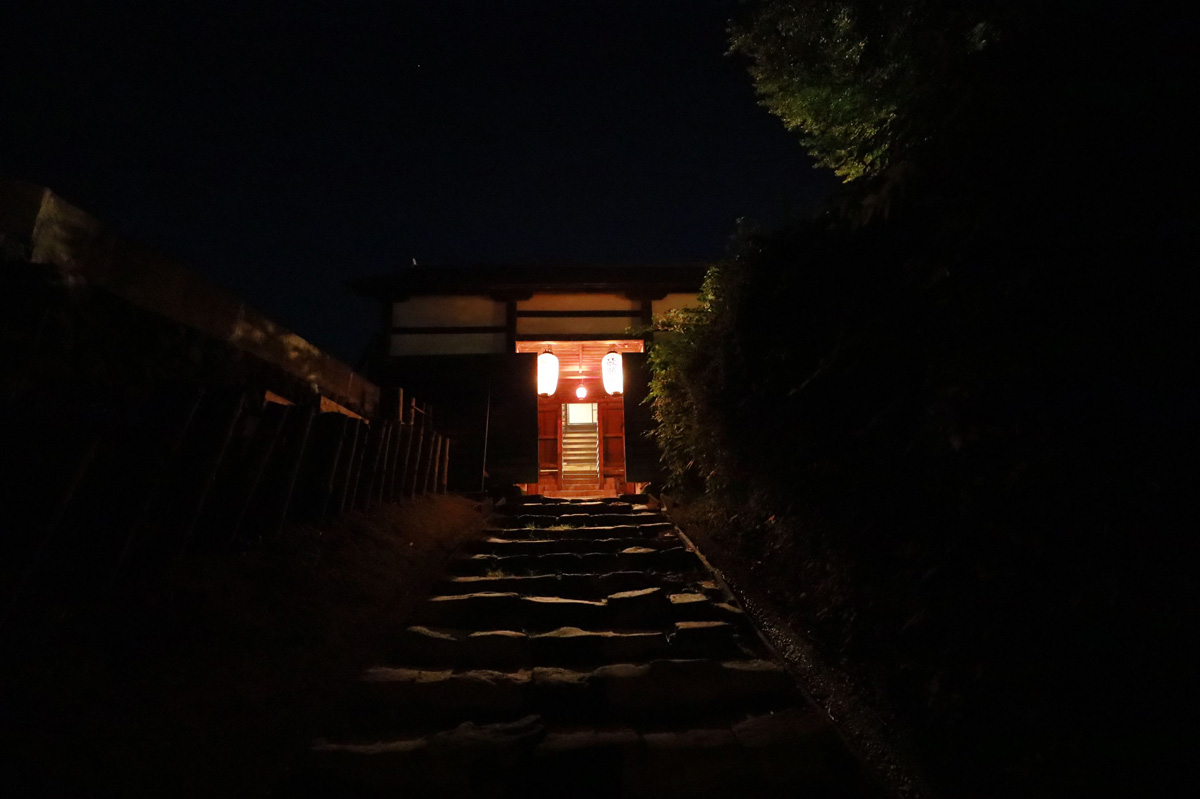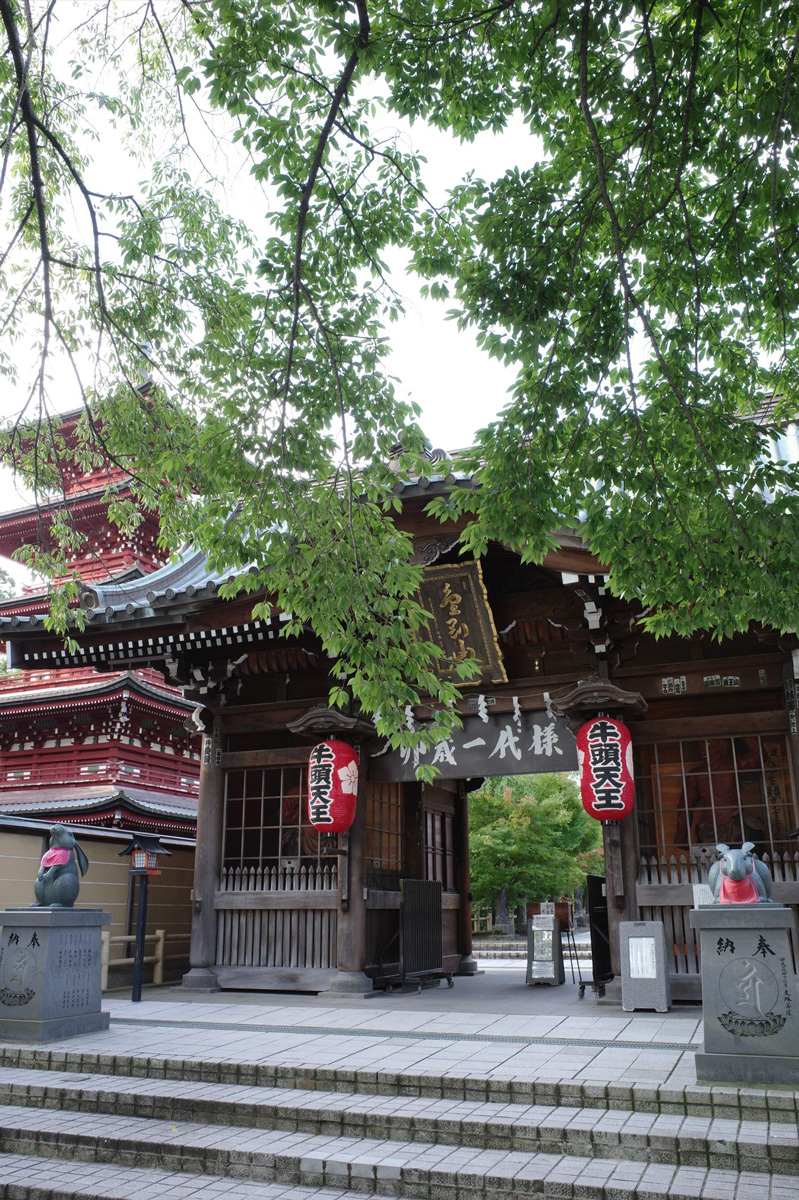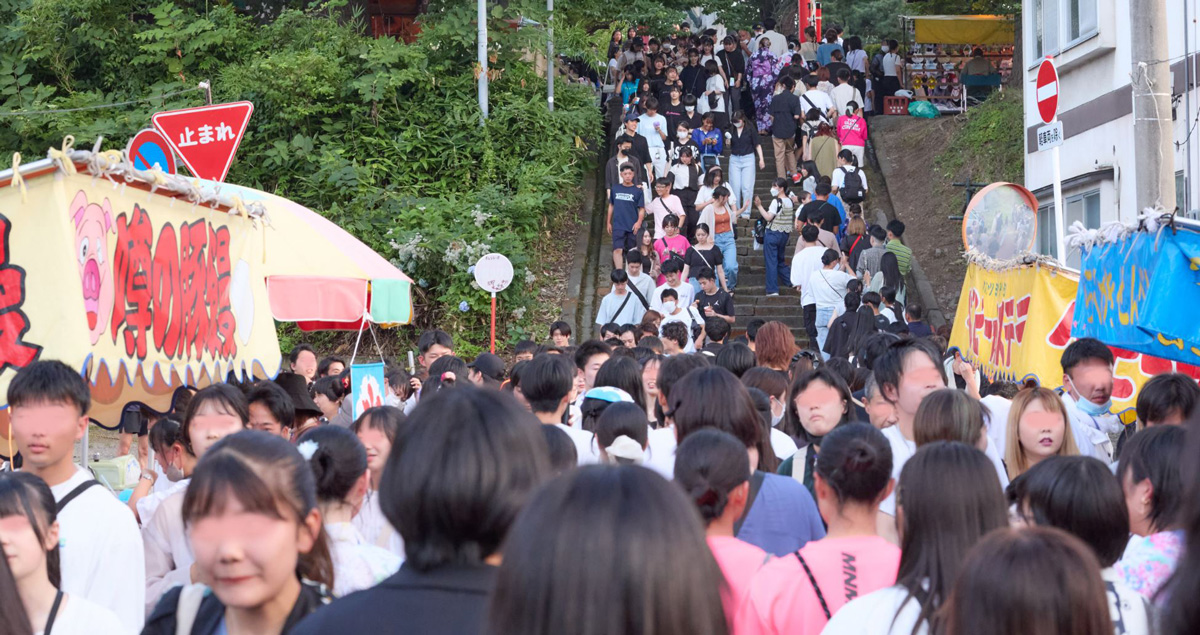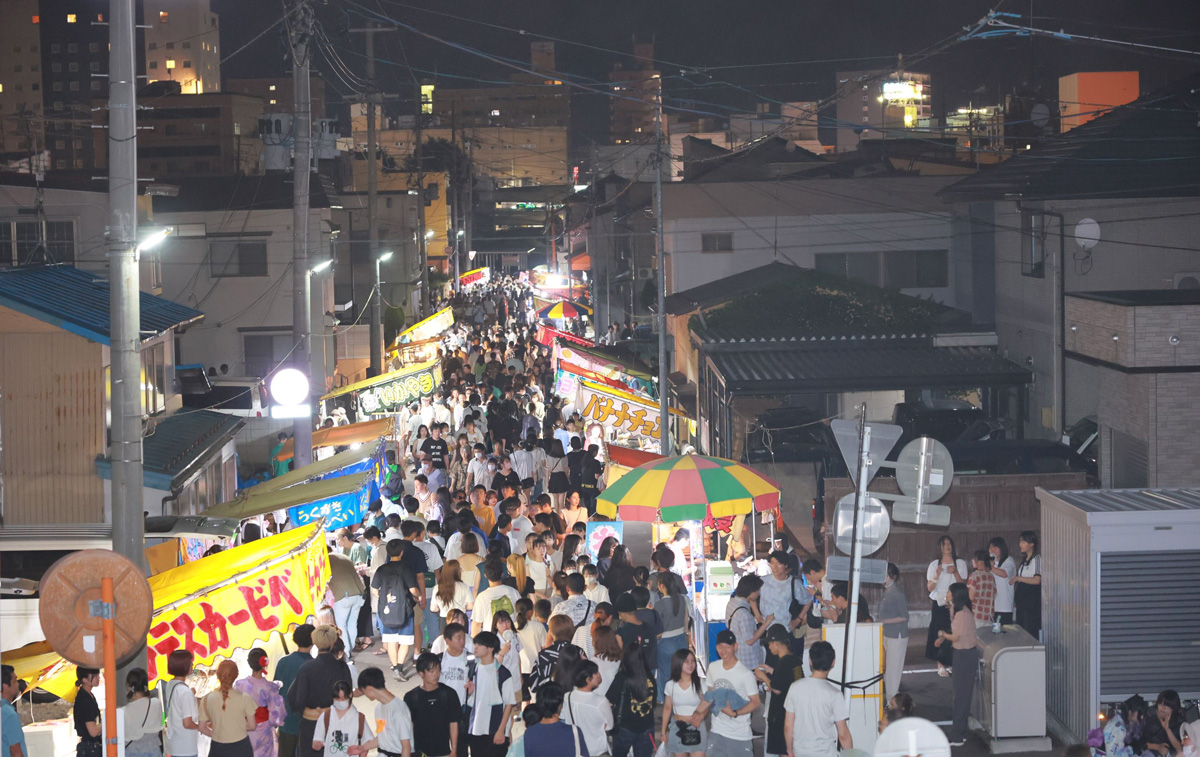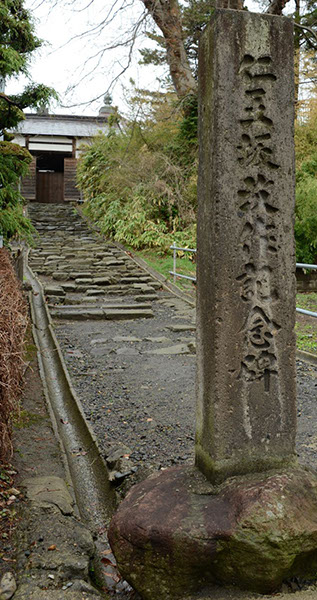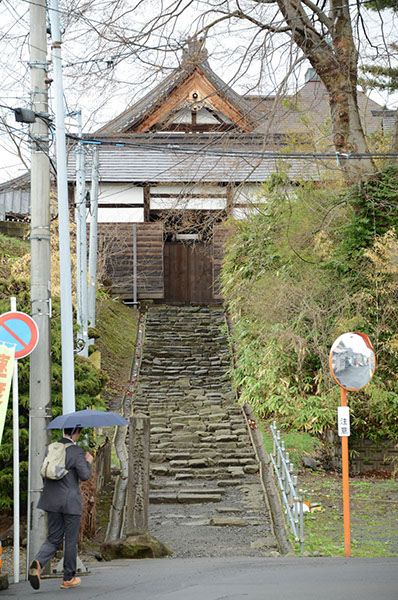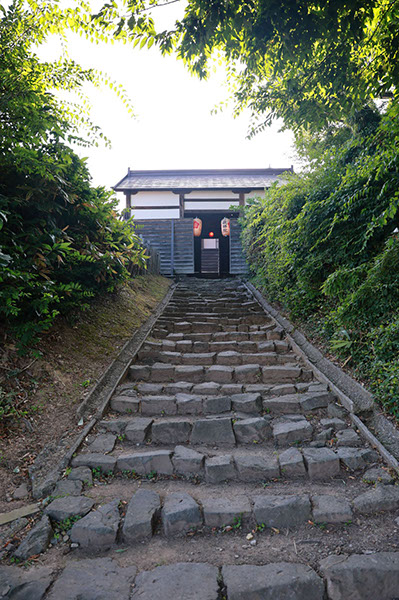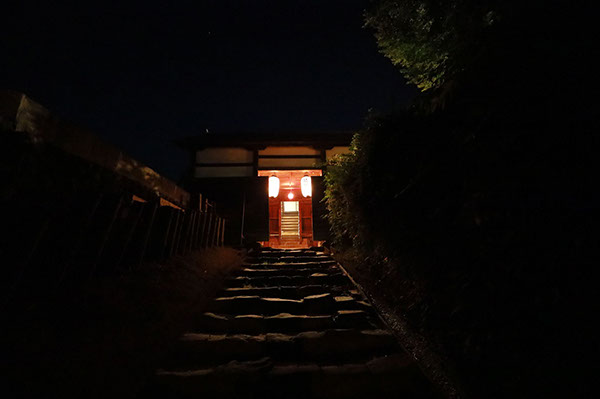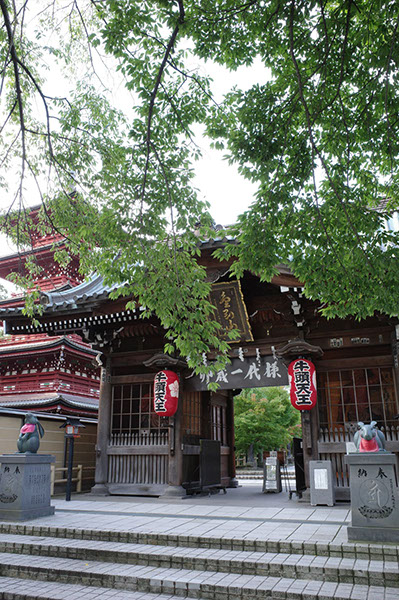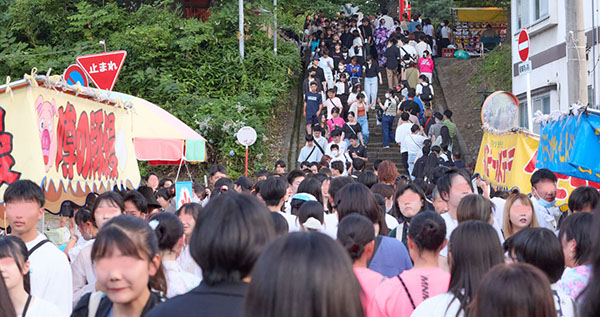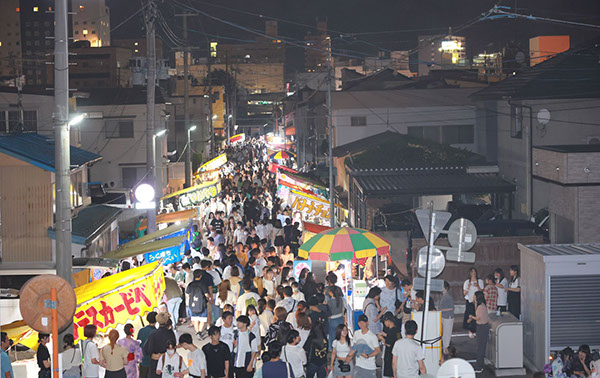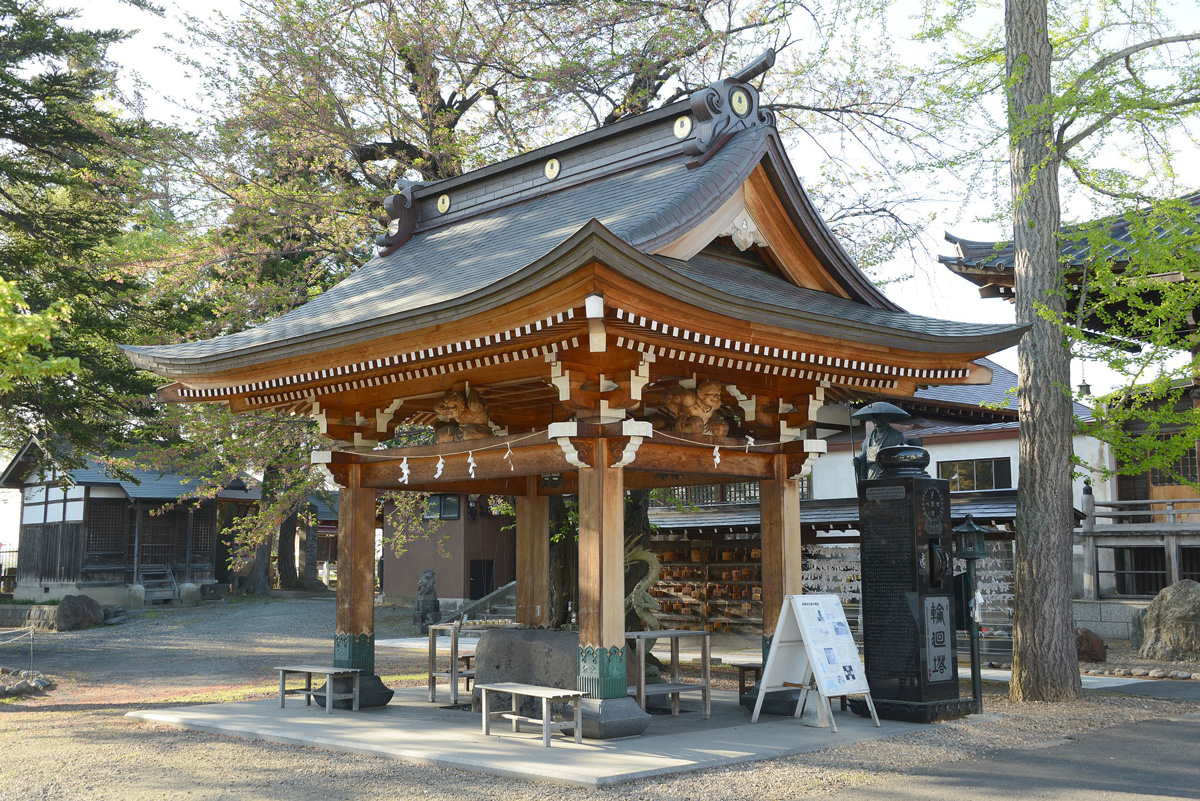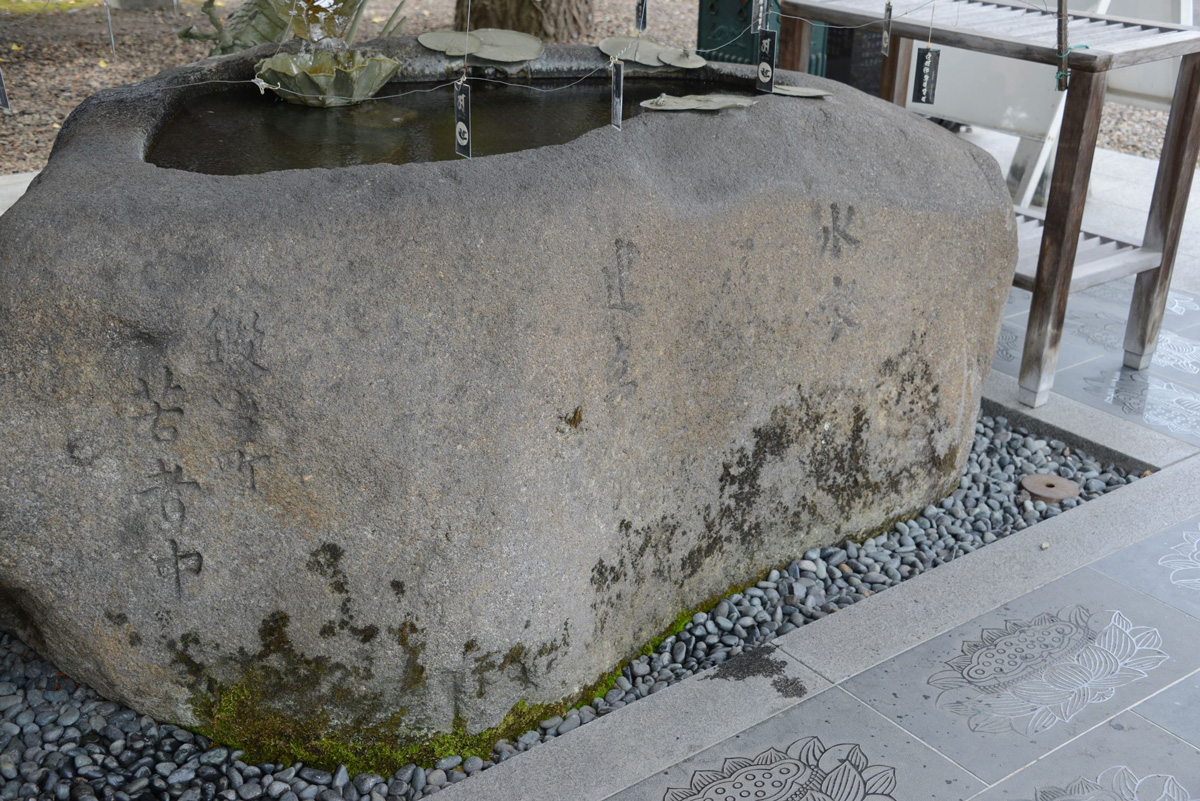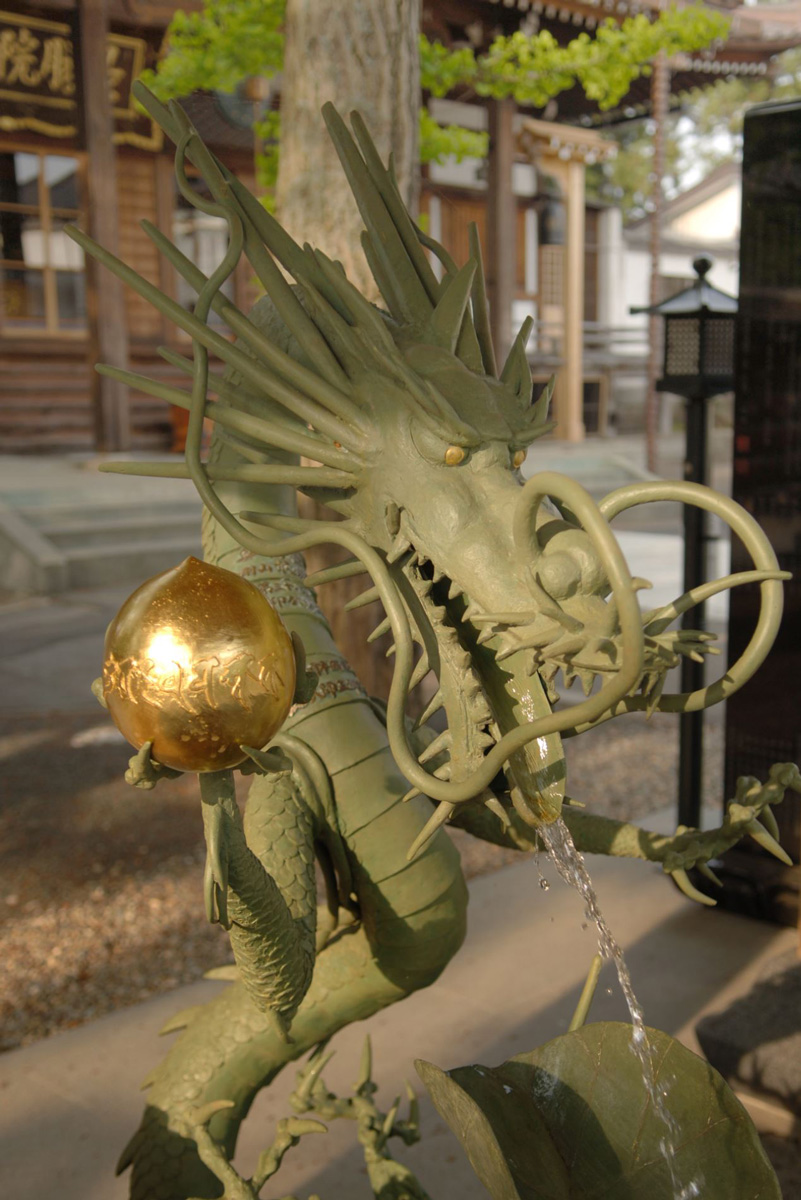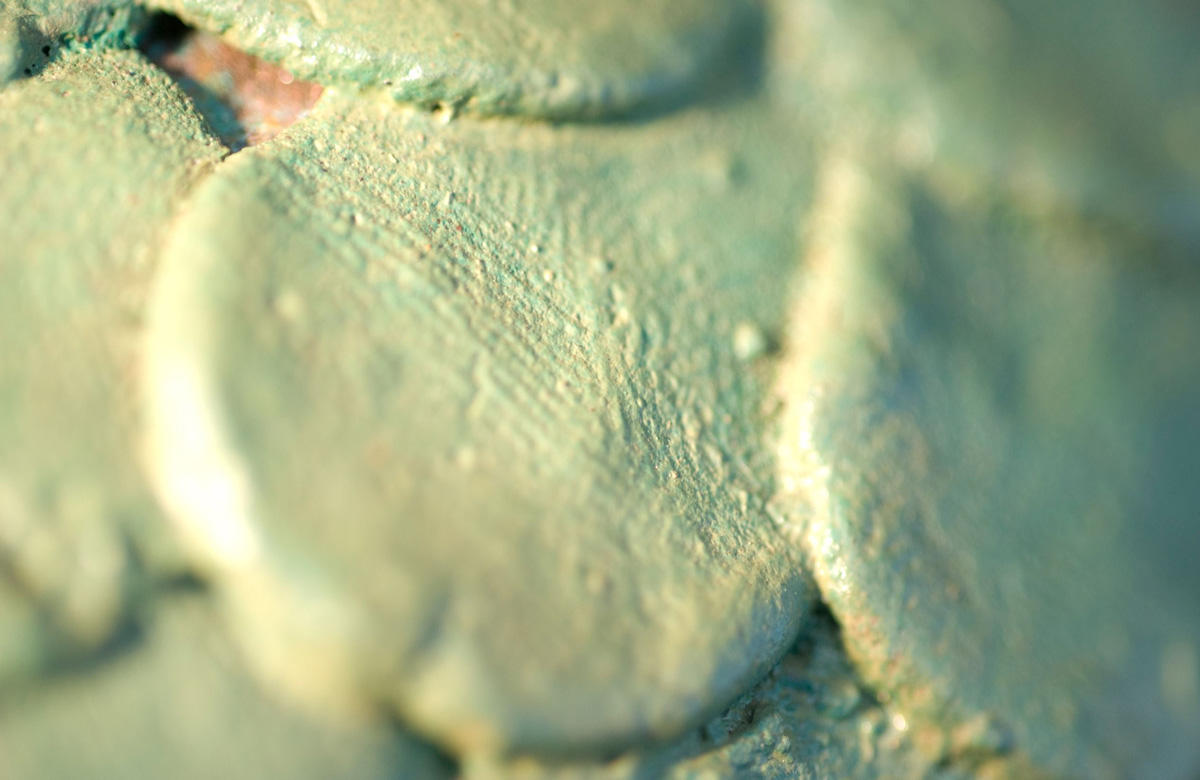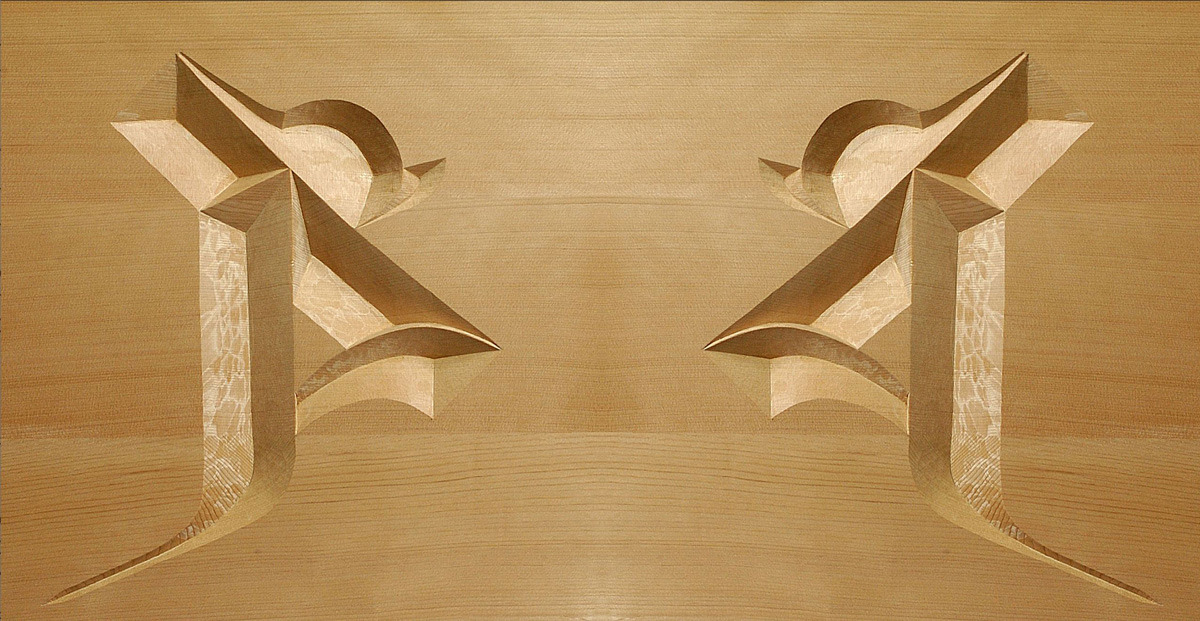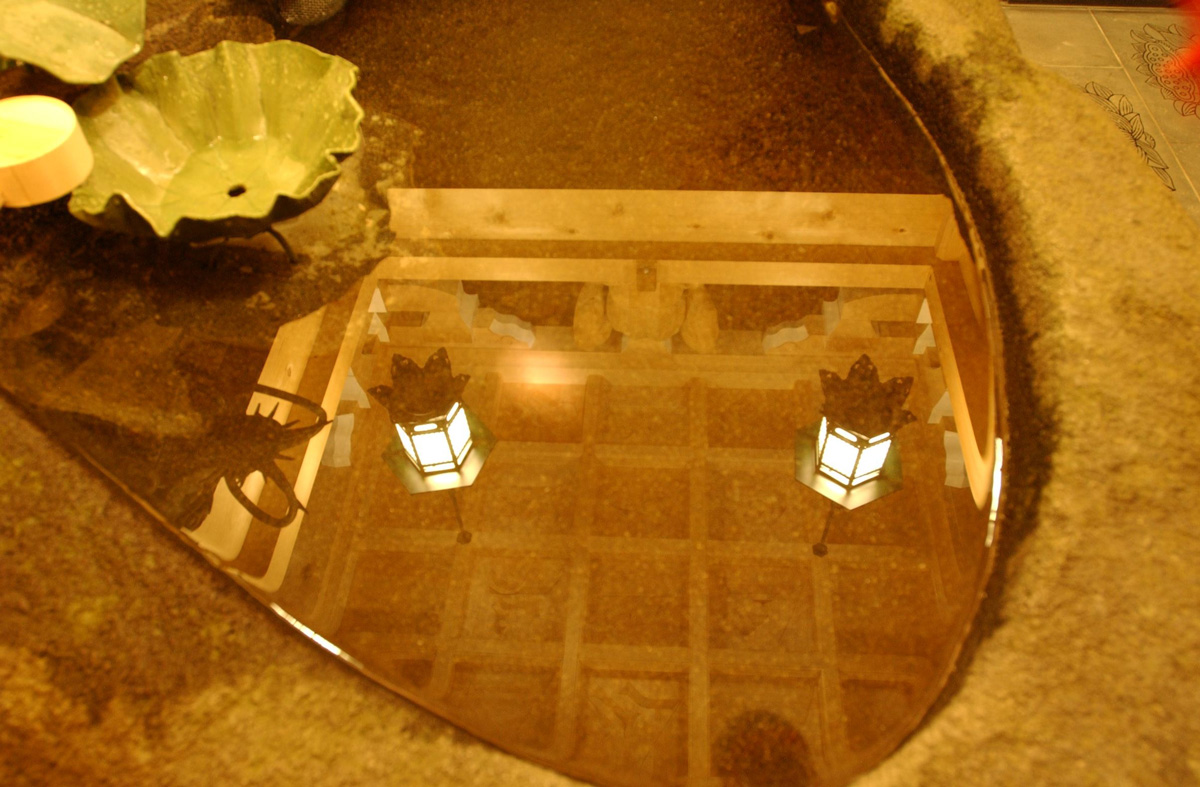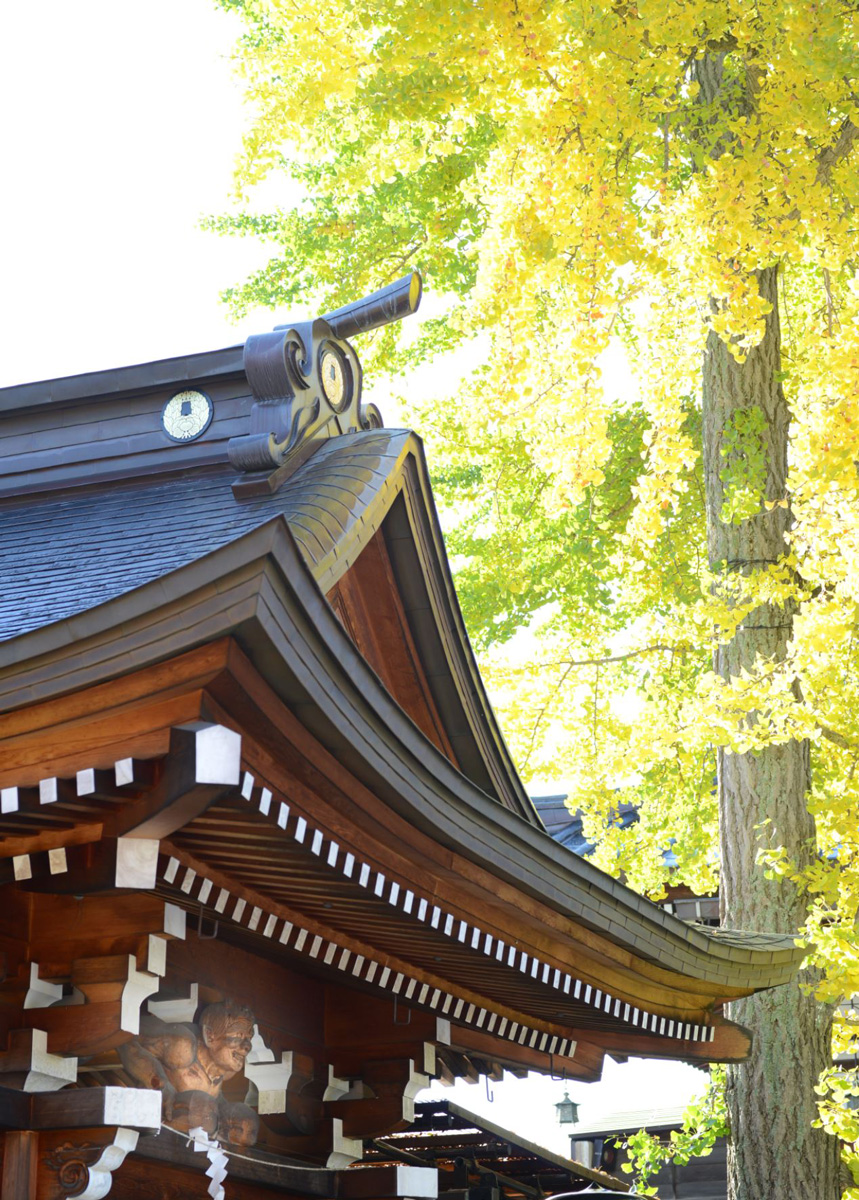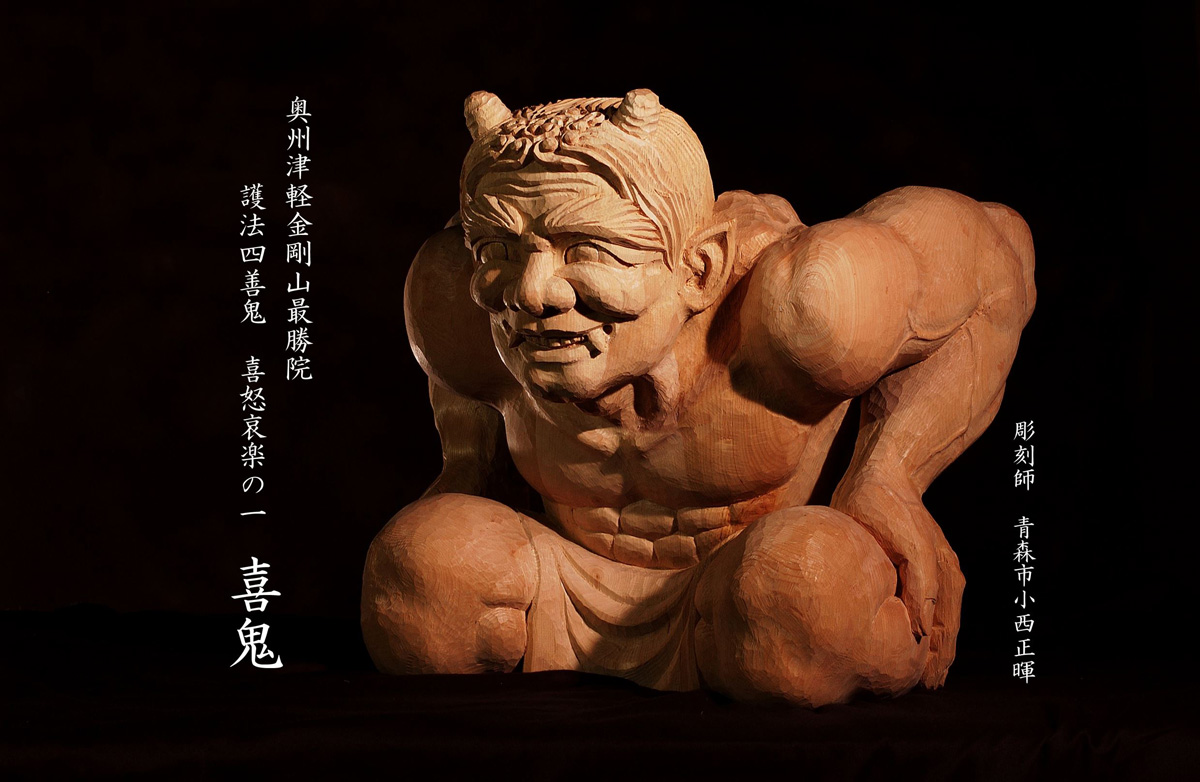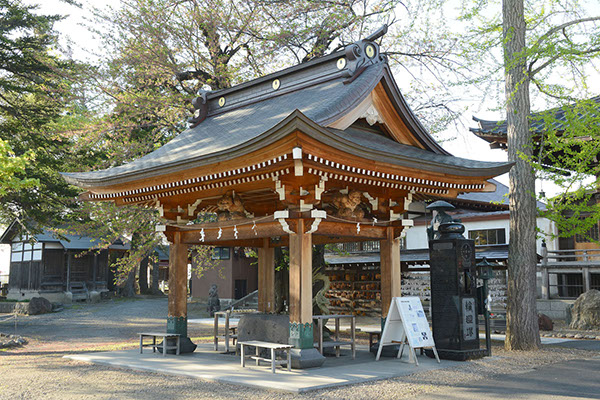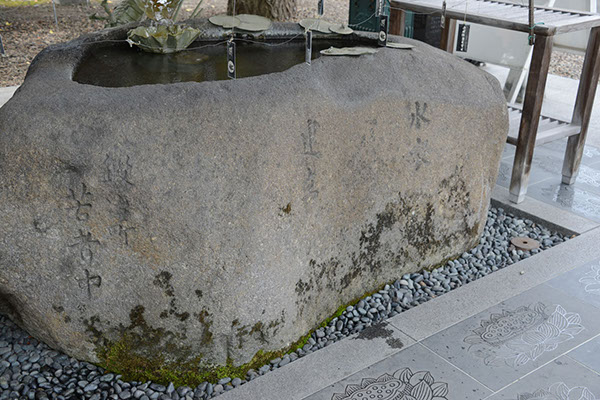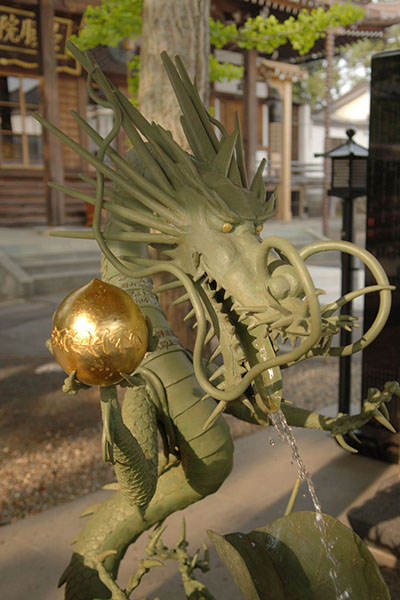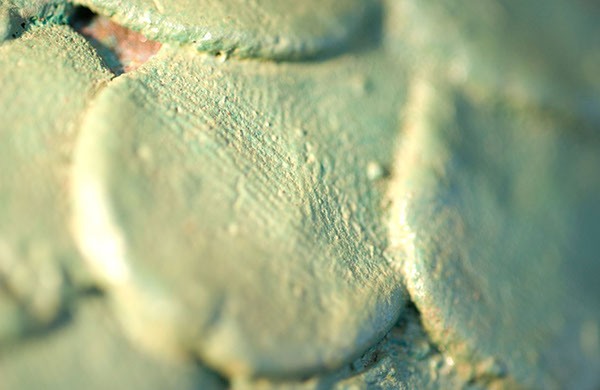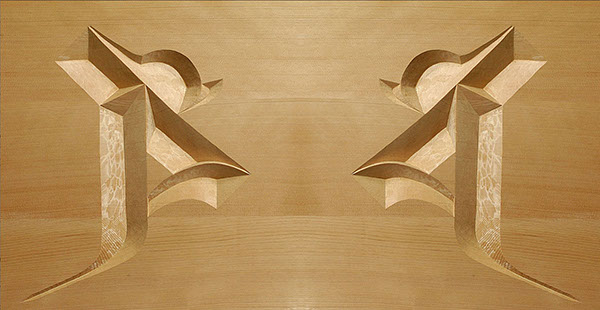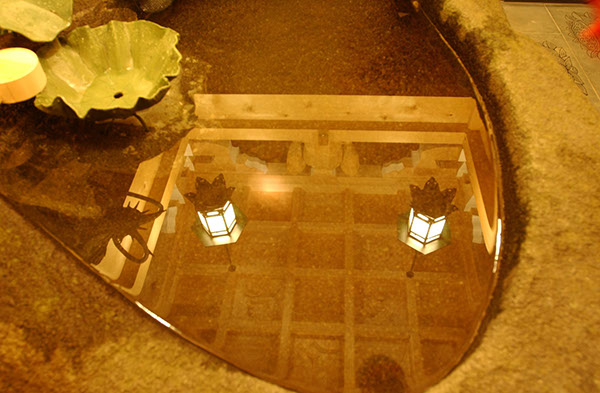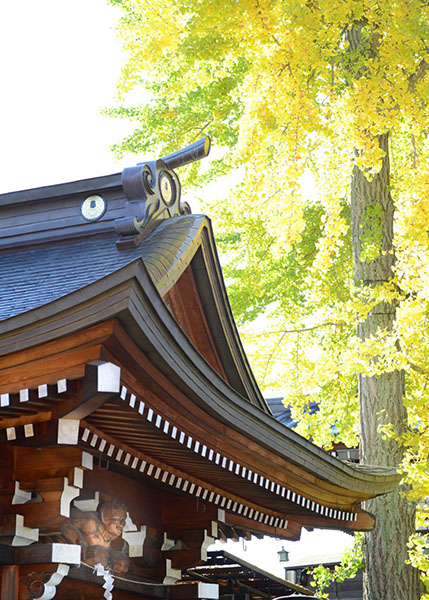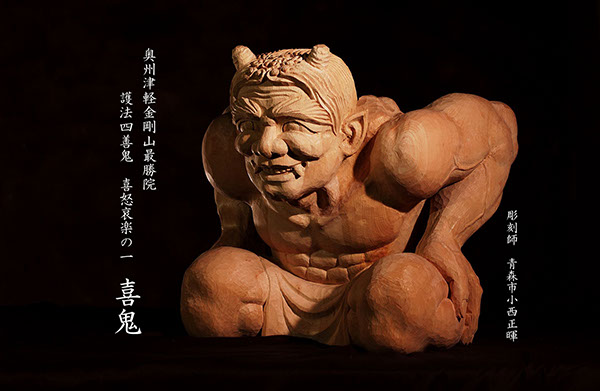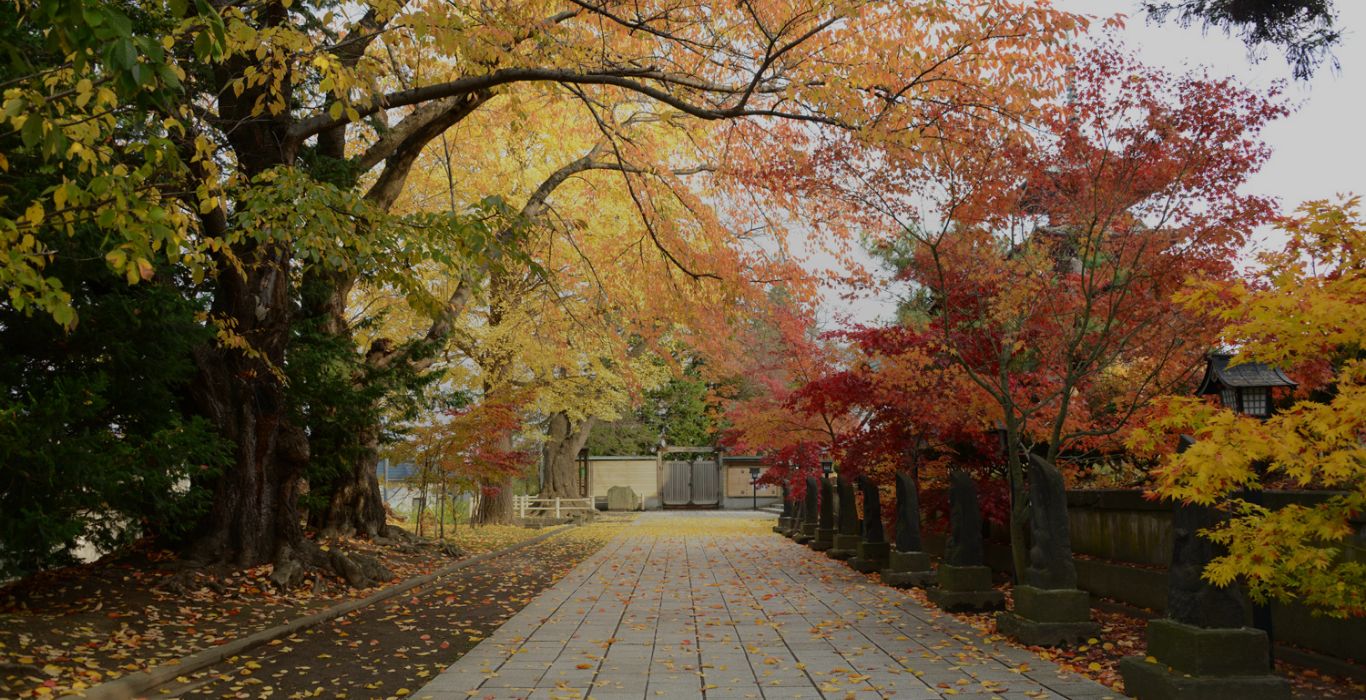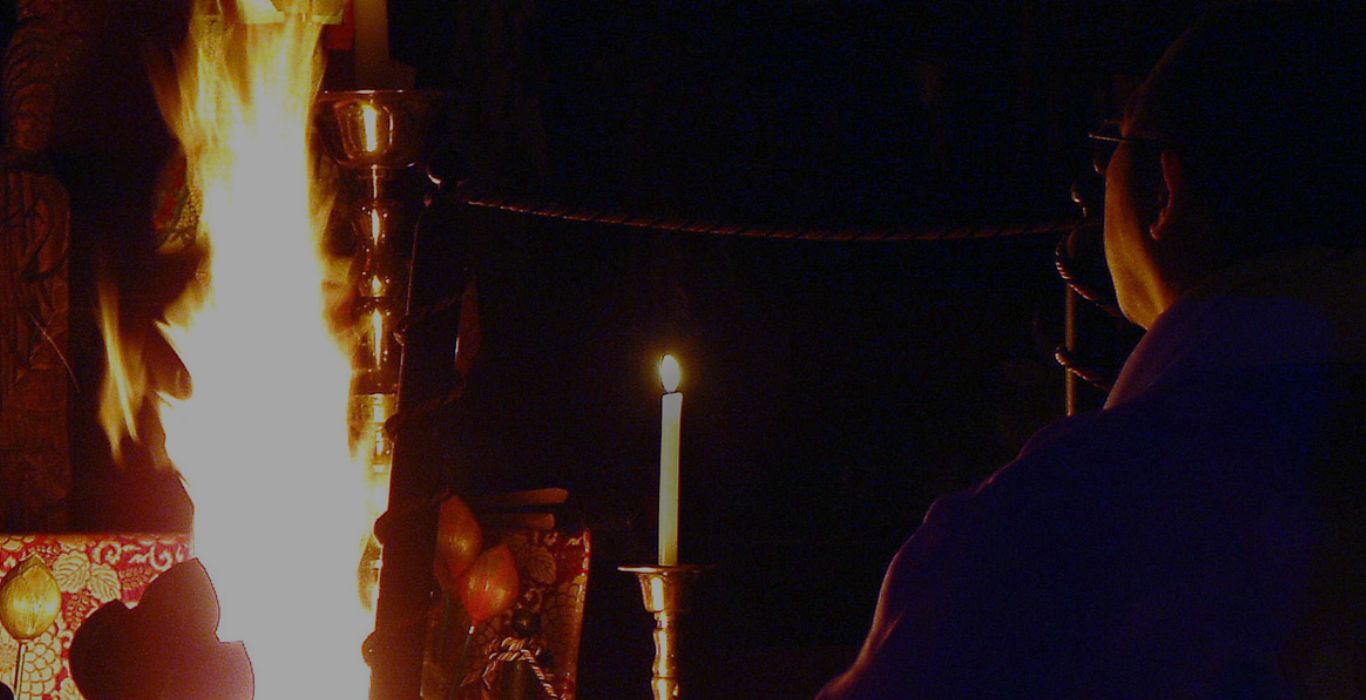Structures in Saishoin Temple
The most beautiful Five-Storied Pagoda in Tohoku region, the peace bell and its tone in the bell tower, and the ingeniously constructed mizuya, are just a few of the structures found on the Saishoin Temple grounds.
01Saishoin Five-Storied Pagoda
There are 22 Five-Storied Pagodas built in the Edo period (1603-1867) that still exist in Japan, and the Five-Storied Pagoda of Saishoin Temple is the northernmost pagoda in the nation. It is designated as a National Important Cultural Property, and is praised for its stability and beauty, as noted in the description of the designation: “the most beautiful pagoda in the Tohoku region.”
The elevated site makes the pagoda stand out even when seen from the city. The view from the embankment located at the former Minami Tameike (aka “Kagamigaike,” now Hirosaki University’s Nantou ground) has long been depicted in paintings. Saishoin Five-Storied Pagoda seen from the Hourai Bridge in Dotemachi area has been sung about in poems, and other scenic spots to enjoy the Five-Storied Pagoda are scattered across the city. The Saishoin Five-Storied Pagoda has been a well-established symbol of Hirosaki City.
The Five-Storied Pagoda was erected in 1666 by Kyokai, the priest of Daienji Temple, in honor of the fourth lord Tsugaru Nobumasa’s devotion. The pagoda was built for the repose of the souls of the warriors, both friend and foe, who died in the many battles during the unification of Tsugaru region by Tsugaru Tamenobu, who became the lord of Hirosaki during the Sengoku period. It is approximately 31.2 meter-high, and although there are various theories as to who oversaw its construction, it was completed through a process of trial and error. It is considered to be a well-proportioned pagoda characterized by the long pagoda finial at the top in relation to the total height.
In the early Meiji period, the policy to separate Shinto and Buddhism triggered a movement that advocated for the expulsion of Buddhism from Japan. Saishoin Temple, Hyakutakuji Temple(*1), and Daienji Temple (*2) were severely affected. Every single structure of the Saishoin Temple were destroyed because it was located on the northeast side, or the side considered to be unlucky, of Hirosaki Castle for the purpose of repelling evil spirits. The temple status was moved to the site of Daienji Temple, and Saishoin Temple took over Daienji’s seven structures that composed a Buddhist temple compound. The Five-Storied Pagoda became part of Saishoin Temple in this process and has been maintained by the temple ever since.
In 2003, a ceremony was held to celebrate the enshrinement of the new principal image Honzon Taizokai Dainichi Nyorai (Dainichi Nyorai from the Womb Realm) in response to the movement to restore the Honzon that had been missing since the early Meiji period expulsion. The Dainichi Nyorai from the Womb Realm was selected as the principal image since Dainich Nyorai from the Diamond Realm was already enshrined in the main hall of Saishoin Temple.
*1 Hyakutakuji Temple
At the beginning of the Meiji period (1868-1912), Hyakutakuji Temple was converted to a shrine and renamed “Iwakiyama Jinja,” under the leadership of the National Shintoists of the time. As a result of this movement to abolish Buddhism, Hyakutakuji was forced to close down and the name “Hyakutakuji,” which had existed for several hundred years, was abolished. Hyakutakuji Temple was one of the temples most closely associated with Saishoin Temple.
*2 Daienji Temple
Due to the abolition of Buddhism in the Meiji period, Daienji Temple was forced to move to a new location and merged with Kohakuji Temple in the town of Owani, about 10 kilometers south of Hirosaki. Daienji Temple was one of the temples closely associated with Saishoin Temple. It is believed that the main reason for the relocation of the temple was that it enshrined Gozu Tenno, a god to ward off plague and disease.
02“Hondo” Main Hall
Hondo is the main hall where the principal image Honzo, the religious core of the temple, is enshrined.
Morning and evening services and many other religious events are held in the main hall of Saishoin Temple. During the “Hirosaki Cherry Blossom Festival” in spring and the “Hirosaki Neputa Festival” in summer, the doors of the main hall are opened to tourists welcoming many visitors. The main hall is also the site of the “Gachirin-kan” meditation ceremony.
The main hall was destroyed by arson in 1958, and the present main hall was rebuilt in 1965. Later, the roof was reshaped to protect it from snow, resulting in its current form (*3).
*3 The original roof shape of the temple, built by Shoten, the 37th chief priest of Saishoin, was a flow gabled roof. In 2002, the first year of the 38th chief priest Kosho’s term of office, the roof shape was changed to include chidori gable on the front roof and kara-hafu gable on the eaves, adopting a gongen-zukuri style. The renovation was done in response to concerns regarding snow protection measures.
03Gomado Hall
Gomado Hall was once used as the main hall when the temple was formerly Daienji Temple. Currently, it is used as a place to pray and conduct purification ceremonies and other benefits for the present world (Genzeriryaku*4). It is a very old structure where a writing in ink dated 1757 (Horeki 7) has been discovered. It is believed that the actual date of construction dates back even further.
According to documents, the principal image Honzon was Dainichi Nyorai when it was part of Daienji Temple, but its fate is unknown because it was damaged by the movement to abolish Buddhism at the beginning of the Meiji period (1868-1912). The Gozu Tenno (*5), which has remained from when it was part of Daienji Temple, is now enshrined in the center of the Shumidan (*6), interpreted as “a secret Buddha that is close to the principal image as possible.”
In addition, Kangiten (a.k.a. Shoten), who prayed for the longevity of the descendants of the Tsugaru family, and the principal image of Koshinmachi ceremony, Shomen Kongo, are also enshrined here.
Many old historical votive pictures and frames fill up the walls of the hall.
*4 “Genzeriyaku” refers to the fulfillment of the wishes of those who live in this world through the benefits of performing blessings and prayers. It means to receive such benefits through faith and belief.
*5 Gozu Tenno is a deity that was “extinguished and extirpated” throughout Japan by the Meiji Restoration government and the national Shinto religion at the time due to the abolition of Buddhism in the Meiji period. It is said that Gozu Tenno was worshipped as a god to ward off pestilence, derived from the fact that chinaberry tree believed to grow on Mount Gozu in Tenjiku (an old name for India) cools fevers caused by illness.
*6 The Shumidan is a raised area in a Buddhist temple where the principal image is enshrined, and it is usually located in the center of the hall.
04Shoro Bell Tower
The Shoro bell tower and Bonsho temple bell of Saishoin have a historical background. In the Edo period (1603-1867), there was a bell in Moricho under Hirosaki Castle, and it was rung every day at a fixed time to tell the time. However, during the Showa period (1926-1989), when World War II broke out, the bell was forced to be shipped out due to a metal recall ordinance. After the war, many citizens regretted the loss of the bell, and the Chamber of Commerce and Industry of the time played a central role in the restoration efforts. Since the original site (Moricho) no longer had the bell tower and the land had been sold, the site was rebuilt in Saishoin Temple grounds in 1956, as Saishoin Temple was an important part of the daily lives of many citizens at that time.
The bell can be rung during the day from April 8 in early spring which is the day of Buddha’s birth, to October 31 in late autumn as the “Bell of Peace” to pray for world peace. The bell is rung 108 times every year from New Year’s Eve to New Year’s Day as “Joya no Kane.”
The sound of the bell is exquisite. The sound of the bell ringing vibrates intensely through listeners when close by, but the distant sound of the bell at Saishoin Temple emphasizes an atmosphere unique to Hirosaki, an ancient city of Japan. By reaching the eyes, ears, body, and soul of spectators, the experience of listening to the sound of the bell from Dotemachi’s Horaibashi Bridge and looking on the Five-Storied Pagoda of Saishoin Temple against the mountain of Kudoji Temple highlights the atmosphere of the ancient city of Hirosaki, where time has long since passed.
05Old and New Niomon Gate and Niozaka Slope
The gate of a temple is called a sanmon. Relatively large gates sometimes have a pair of Nio statues enshrined. Saishoin Temple have a pair of Nio statues at its temple gate, and the gate is called “Niomon.” Saishoin has two Niomon gates. The older Niomon gate was built in 1827 and is called Kyu-niomon in Saishoin. The other Niomon, the new Niomon, is the current main entrance to the temple, and was completed in 1984 after the Nio statues were relocated from the old Niomon. The old Niomon was the original main entrance.
The Saishoin Temple precincts have been repeatedly relocated and reconstructed as buildings and structures, and the current landscape is the result. Therefore, the Saishoin Five-Storied Pagoda is the only building that remains in the same location where it was erected in the Edo period.
The scenery of the temple grounds underwent drastic changes in the late Showa period (1926-1989), when the 38th head priest of the temple, Shoten was in charge of the temple. The only area that remains unchanged is Niozaka, where the old Nio-mon gate stands. Although some modifications have been made, the atmosphere of the time has been preserved, making it a rare sight. Literature from the early Edo period vividly describes the “Gion-e” (Gion festival). Although the old entrance to the shrine is now rarely used, it is evident that the Niouzaka slope was once a cherished area by locals.
It is the hope that both the historic Niomon gate and Niozaka slope will be preserved by future generations. The restoration work required to maintain this landscape requires a significant amount of funding, and at this point, it has proven a challenge to raise the necessary funds. The support of more people is sincerely needed.
06Mizuya Purificatory Font
Until recently, Saishoin Temple had an old stone Mizuya washbasin without a roof. The historical background of this washbasin is clear as the date of construction and who made it are engraved on the basin itself. The inscription says that it was built in May 1861 by young men from the neighboring town council. The year before 1861 was the year when the Five-Storied Pagoda was repaired and completed, and it is known that the Five-Storied Pagoda and the secret Buddha Gozu Tenno were opened to the public. The following spring, the pagoda was fully completed, which was celebrated by all concerned and the local community.
The reason for the lack of a roof is uncertain, but it was either left unrepaired due to age-related deterioration or torn down at the time of the abolition of Buddhism in the early Meiji period. For many years, the roofless washbasin has been an unsuitable place for washing hands and rinsing mouths because of the leaves and other debris that fall in the basin.
When the current Saishoin priest took over, a new wooden structure made of Tsugaru hiba (cypress) was built for the washbasin at the same time of a dedication ceremony. Th great care and attention to detail is evident in the new structure.
At Saishoin Temple, the statue of a dragon emitting water from its mouth is called Baroda Ryu-oh, a Suiten, or the king of dragons, who is said to be in charge of water. The statue is made of bronze and woven with beeswax work by Hirai Shoho of Takaoka City.
To make the roof and structure associated with Dainichi Nyorai, the ceiling was carved with a special method called yagenbori, in which 24 characters of the Komyo Shingon script (Mantra of Light) are engraved in mirrored bonji (Siddham script). The reason for the mirrored Siddham characters is to ensure that they are correctly reflected in the water surface directly below.
Four demons, each with an expression of joy, anger, sorrow, or pleasure, are placed on the beam which supports the ceiling. These four demons were originally evil demons, but they were converted and became good demons through the power of Dainichi Nyorai’s Dharma power. They are taught to be “Gobo Shizenki,” or the four good demons who save people from suffering of various kinds of lost emotions. The demons support the ceiling of the Komyo Shingon, which represents Dainichi Nyorai.
The story of how Saishoin’s Mizuya purificatory font came to be is significant, incorporating ancient teachings, traditions, and techniques both visible and invisible.



